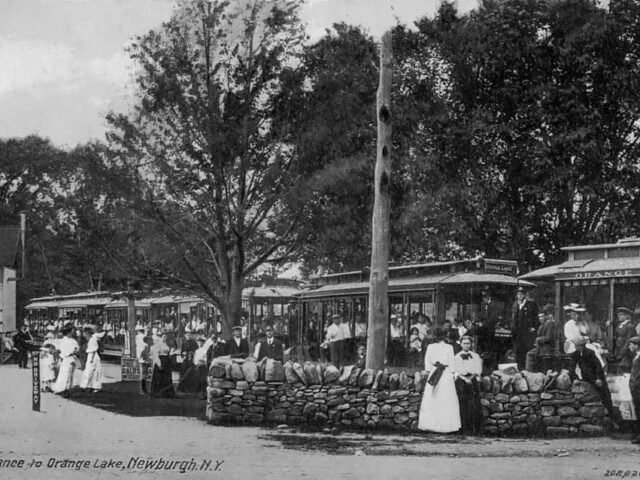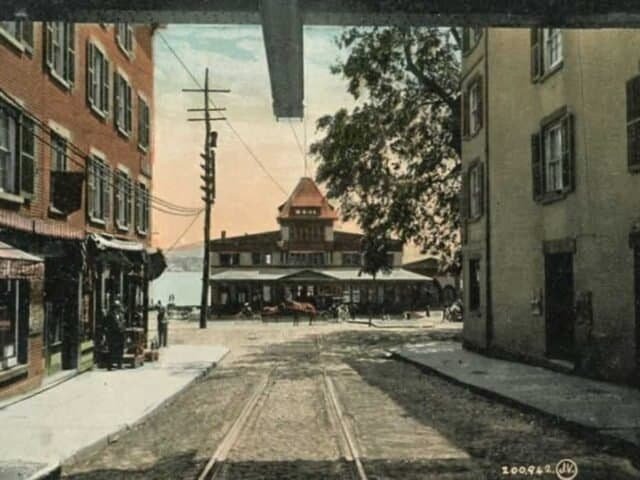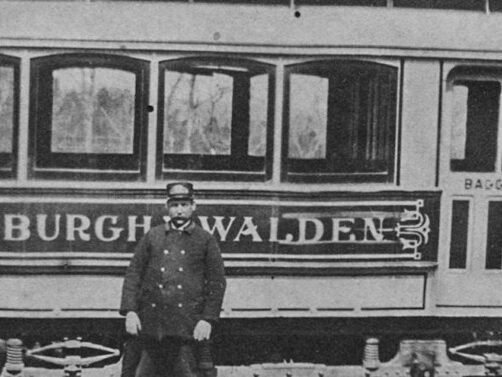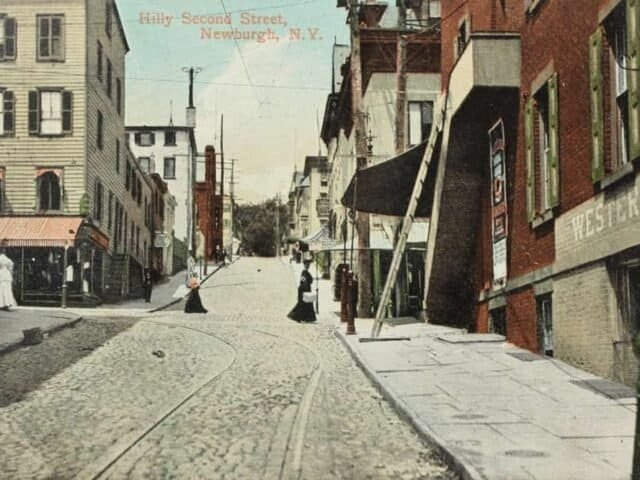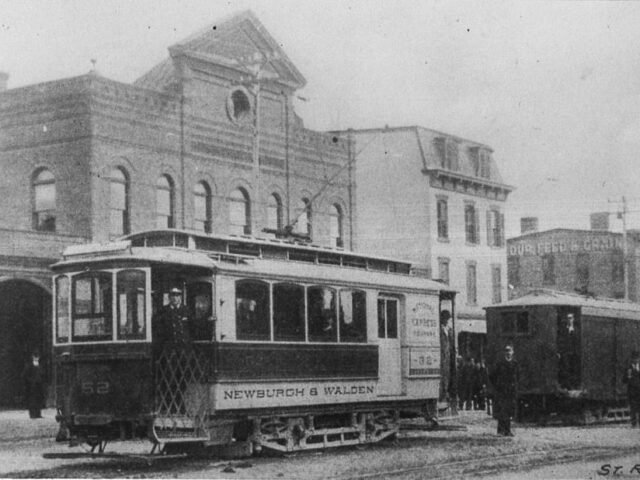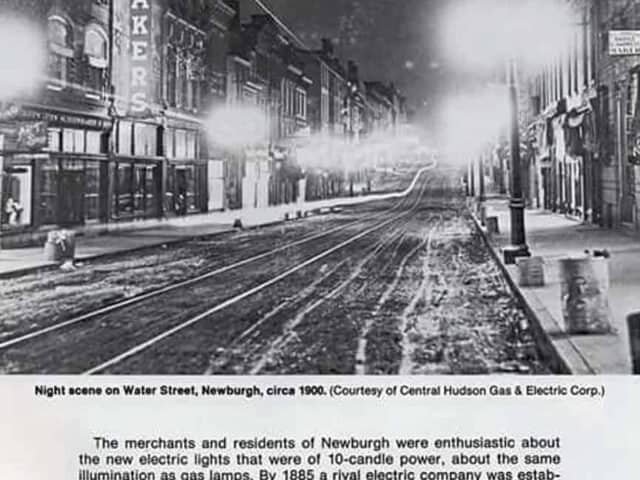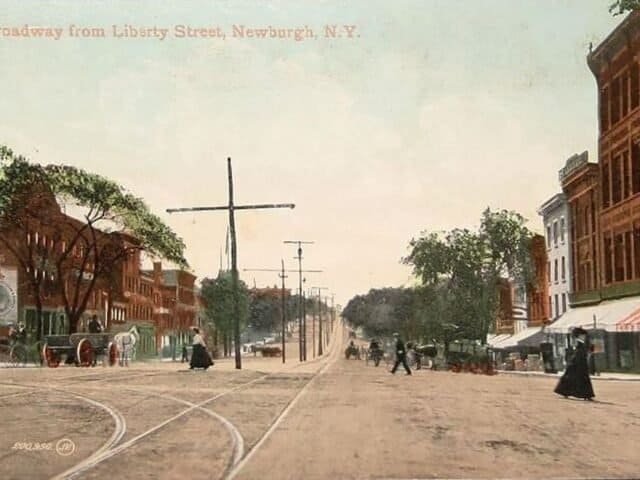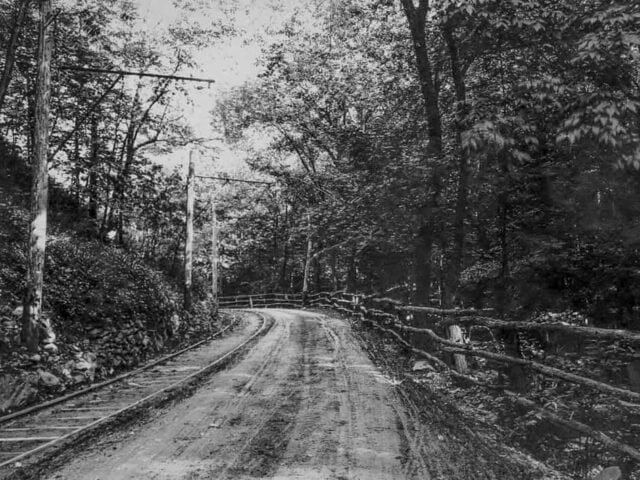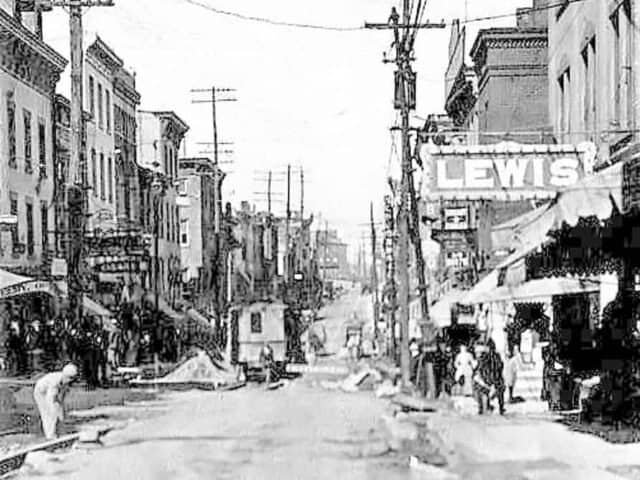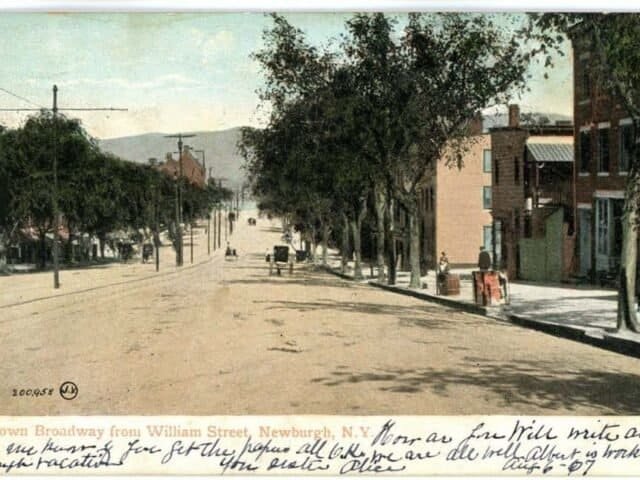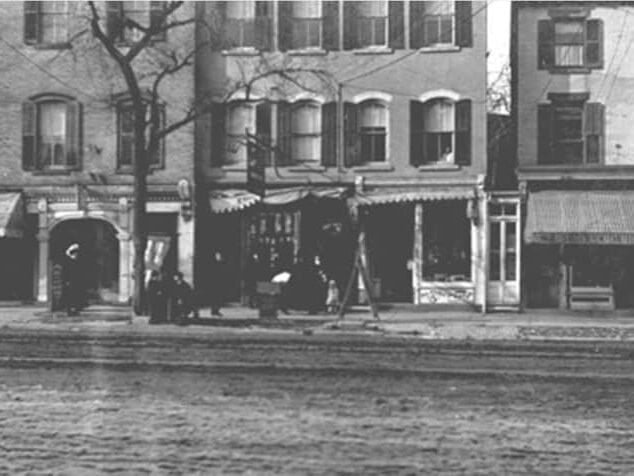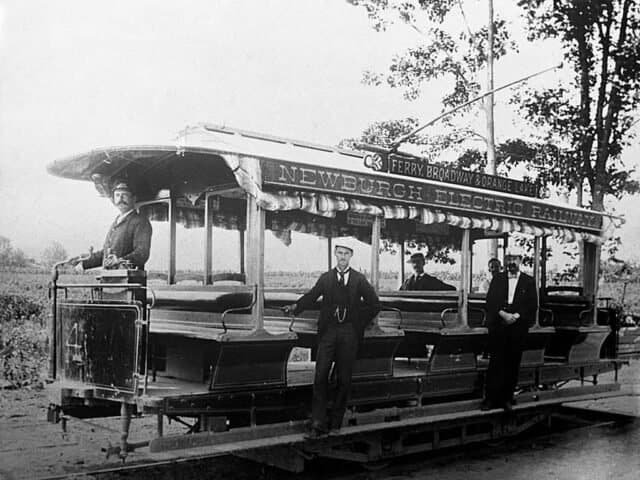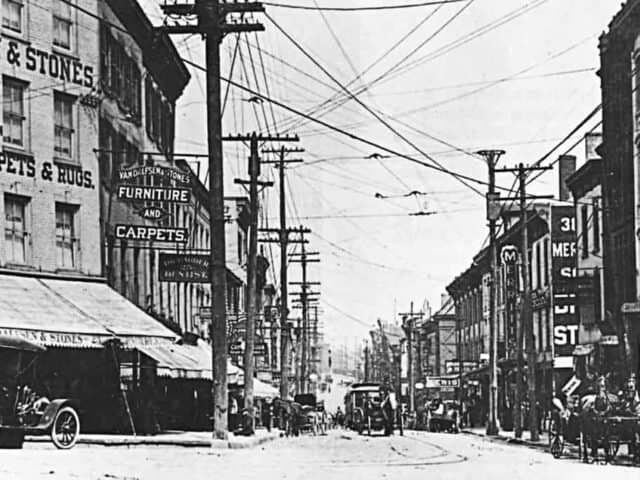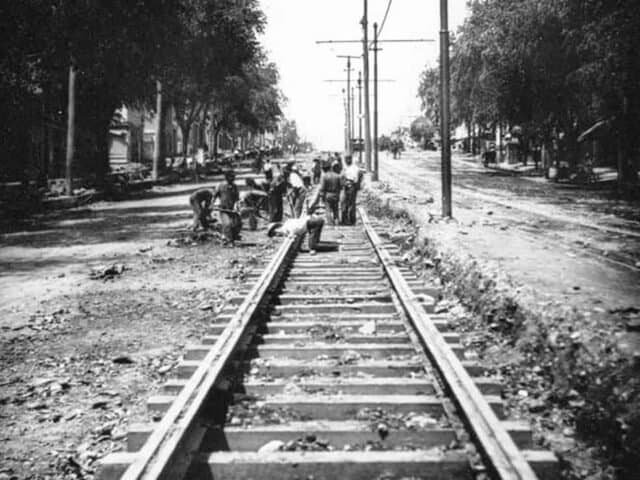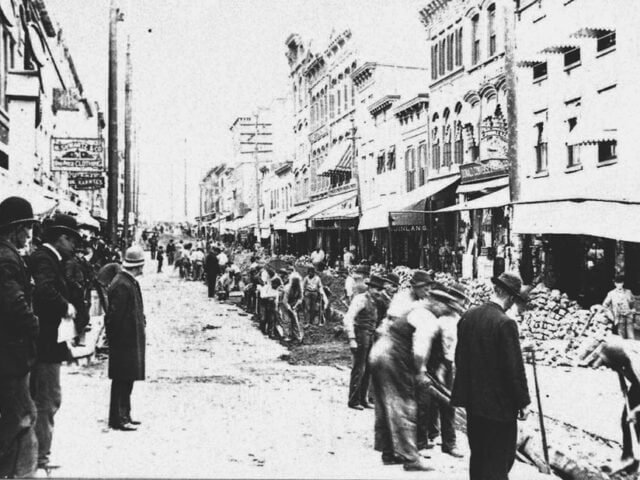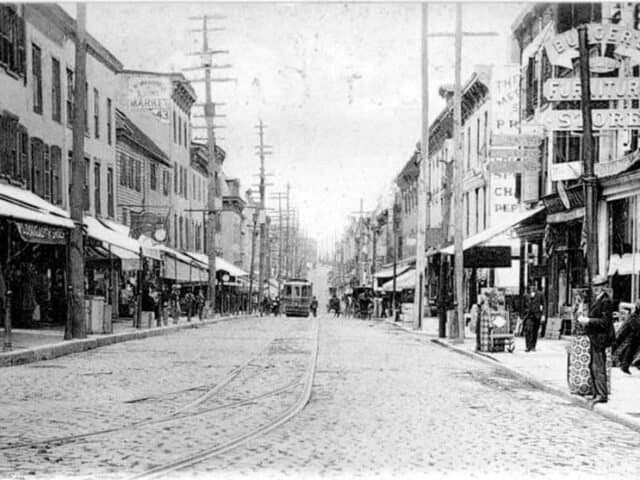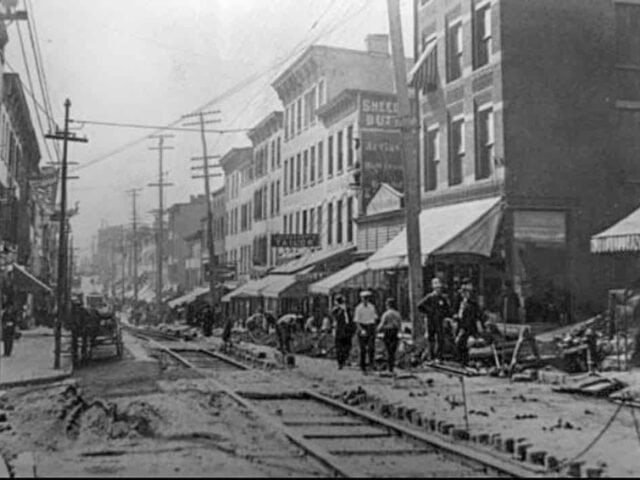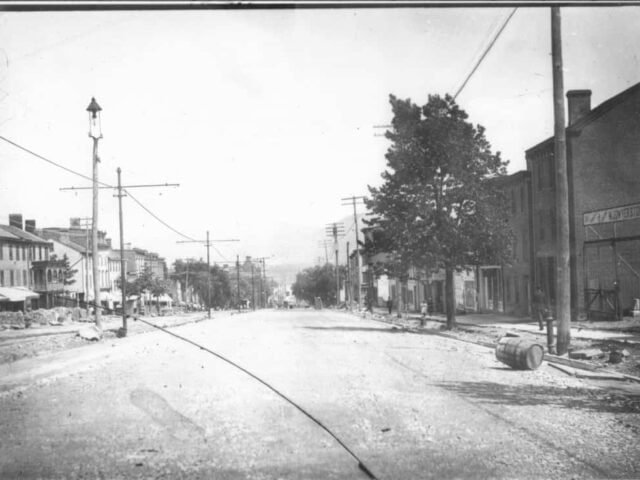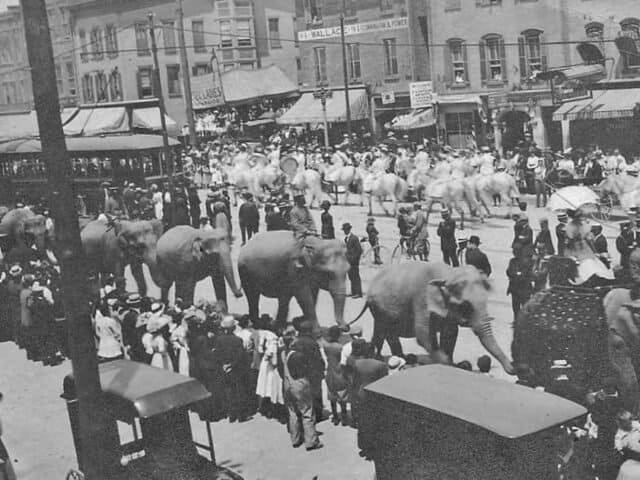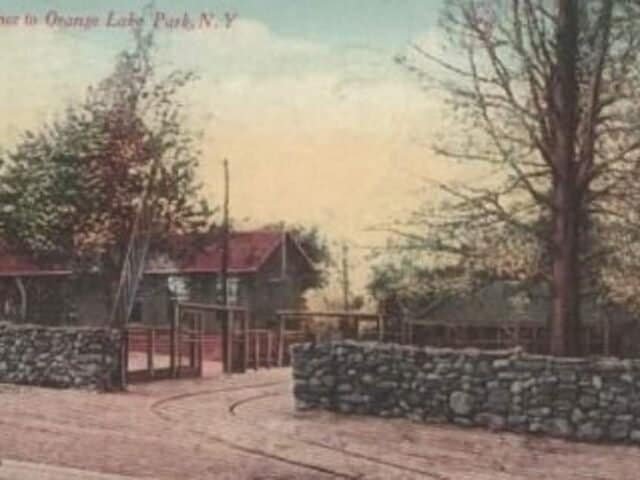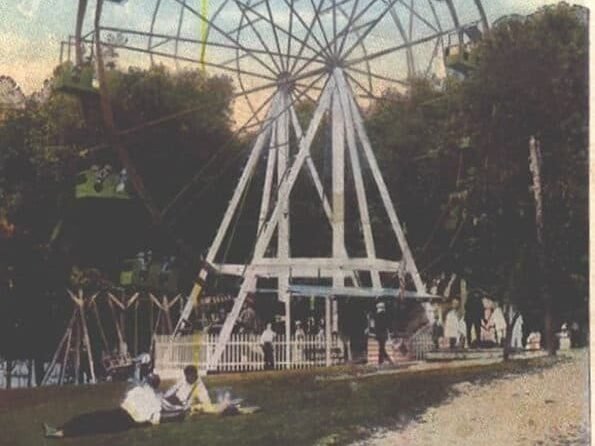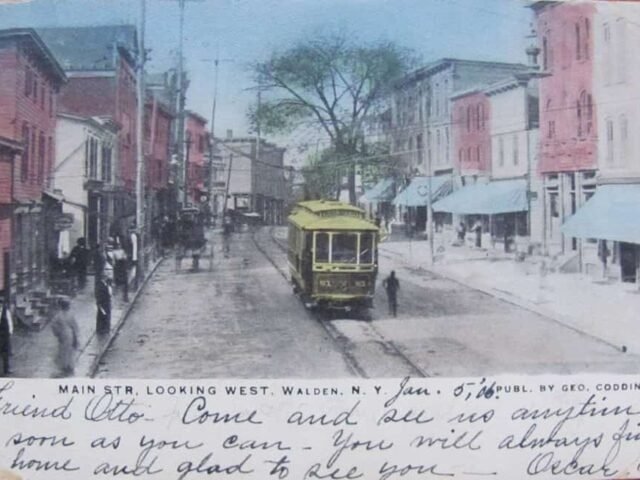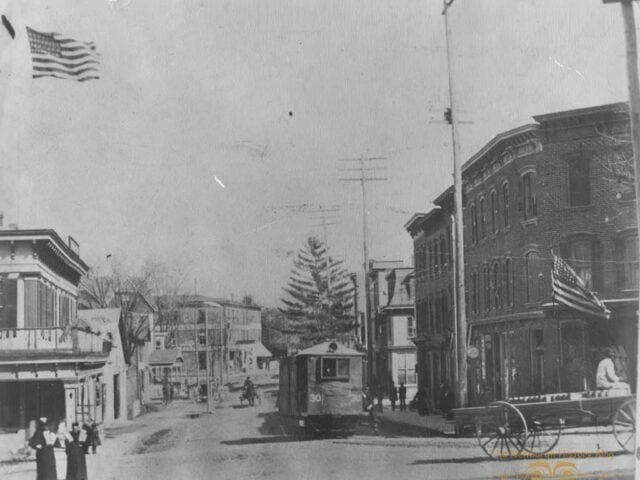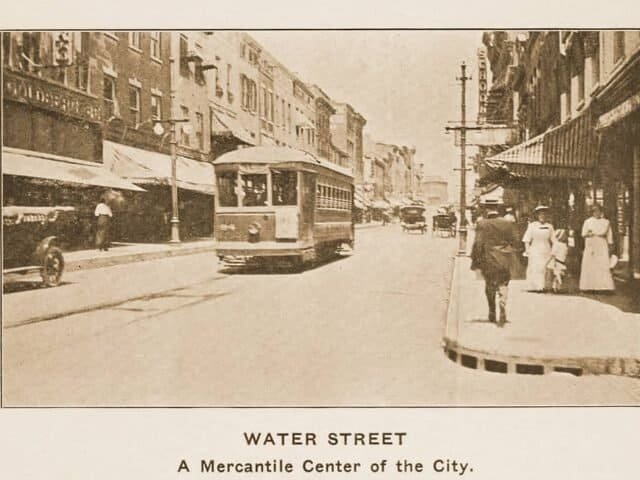Ray Kelly – Video Presentation “Interurban Trolley System” at Goshen Library and Historic Society Facebook Page
In the late 19th Century, Newburgh was a thriving community located on the Hudson River 60 Miles North of New York City. Many would take an incredibly scenic cruise up the Hudson River from New York on one of the many beautiful Steamboats of the day. From New York,
they would head North to escape the heat of the city stopping at Newburgh and other ports along the river to spend a day or two and perhaps take a local trolley to go shopping or relax. The Trolley became a major mode of transportation for both tourists and local residents.
The Trolley was effectively a bridge between animal-powered transportation and motor vehicles. While not as glamorous as the Erie and West Shore Railroads that also served Newburgh [at the time], the trolley was a godsend for city dwellers, and quickly for residents in the Towns of Newburgh and Montgomery along with the Village of Walden.
Service began as a horse-drawn enterprise on December 23rd, 1886. The route was from the ferry landing, up Colden Street to Broadway, and out to Cross Road, current Wisner Avenue. While the horse-drawn trolley was certainly better than walking, there were many drawbacks to using horses:
- First, they must be fed and taken care of. Even though these animals were treated with the utmost kindness and care; they were the most important and expensive piece of equipment on a horse-drawn line. A typical workhorse could drink between 5-7 gallons of water and eat up to 50 pounds of food per day. Of that, 2/3rds was waste. This led to unsanitary conditions on the unpaved streets.
- Next, it took many horses to pull the cars up the hill from the river to the west end of the city. The teams of horses changed along the route, the first was at Grand Street, the next at the stable on 244 Broadway. The constant clip-clop of the hooves of the horses on the streets with Belgian Blocks was quite loud, and the strain they had pulling the cars uphill was also long and time-consuming.

- Finally, even though the horses were well trained, they still were animals, and the amount of passengers they could haul was limited. Back then, to get onto horse drawn streetcars, older boys and men were expected to climb aboard as the car was moving. Since the cars were only going at the slow pace the horses were going, this wasn’t a problem for them. Only women, small children and the elderly had the horses stop for them. This was time consuming and led to the horses working even harder.
There had to be a better way
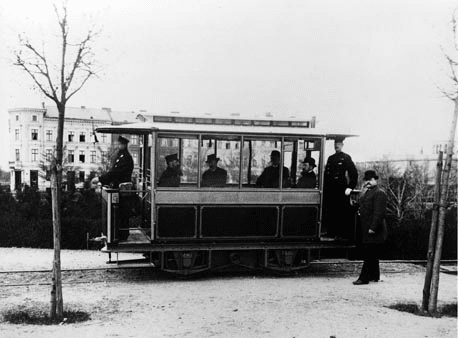
Around the late 1870s and early 1880s in Europe, the Germans and Russians were developing electric-powered street cars. The first was unveiled in a suburb of Berlin in May of 1881. Shortly after that in St. Petersburg, the Russians unveiled their own version of an electric streetcar. While the Germans and Russians were advancing their concepts, here in America there were two schools of thought on how to deliver electric power to street cars. The Van Depole and Sprague systems were both improvements over their European counterparts. The Sprague system won out over the Van DePole as the better electric delivery system. Its basic form is still in use today.
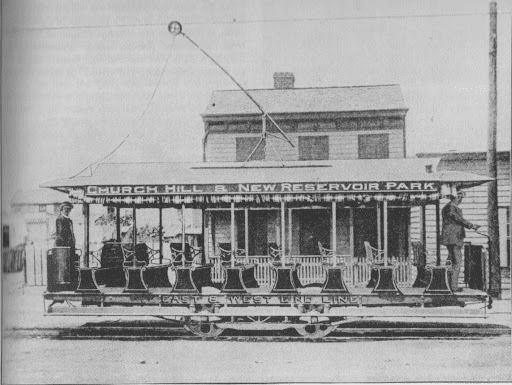
Cleveland Ohio had the first street electric system in America in 1884, it folded after a short while due to technical and financial difficulties. In 1888 using the Sprague system, Richmond VA had the first successful electric streetcar service. Electric car service spread like wildfire throughout the major metro areas of America, along with the Rust Belt of the Midwest and the Northeast.
By the mid-1890s, if your smaller city; Newburgh, Middletown, Port Jervis, Kingston, Poughkeepsie didn’t have electric street service your town was looked upon as a hick burgh. By the mid-1920s, things have rapidly changed with the advent of better roads and less expensive and more reliable automobiles. Now if your smaller city still had street cars, you were derisively called a “Toonerille”.
With the emergence and the popularity of motor vehicles, streets that were built during the days of horse and buggy couldn’t keep up with the rapidly changing volumes of traffic. Collisions between streetcars and motor vehicles became more frequent and sometimes deadly. Larger metro area street cars began fading away by the 1950s, the last electric streetcar line in America was in El Paso TX which shut down in 1974. Now there are some municipalities that use modern versions known as a light rail as means of transport, while others have either vintage or vintage-style cars that are more of a tourist attraction.
When operations began in Newburgh in 1886, the horse-drawn line began service just in the City of Newburgh; it was 2.75 miles in length and about one year later expanded to almost 4 miles. Horse-drawn service ended in May of 1894, the track was rebuilt with heavier 60 and 90-lb rails and on June 9, 1894, the Newburgh Electric Railway began. While Newburgh had the distinction of being the first Orange County Municipality to have street car service, Middletown had begun electric street service in May of 1894. At first, the city was served by electric cars, but by the summer of 1894 reached Orange Lake, and on June 1 1895 with great fanfare, 10 miles to the west of Newburgh, Walden now had a mode of a direct modern connection to Newburgh. October 26, 1901, saw the name of the Company changed to Orange County Traction Company.
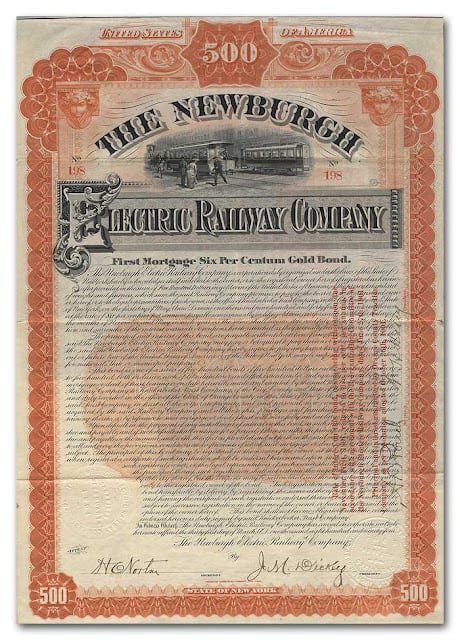
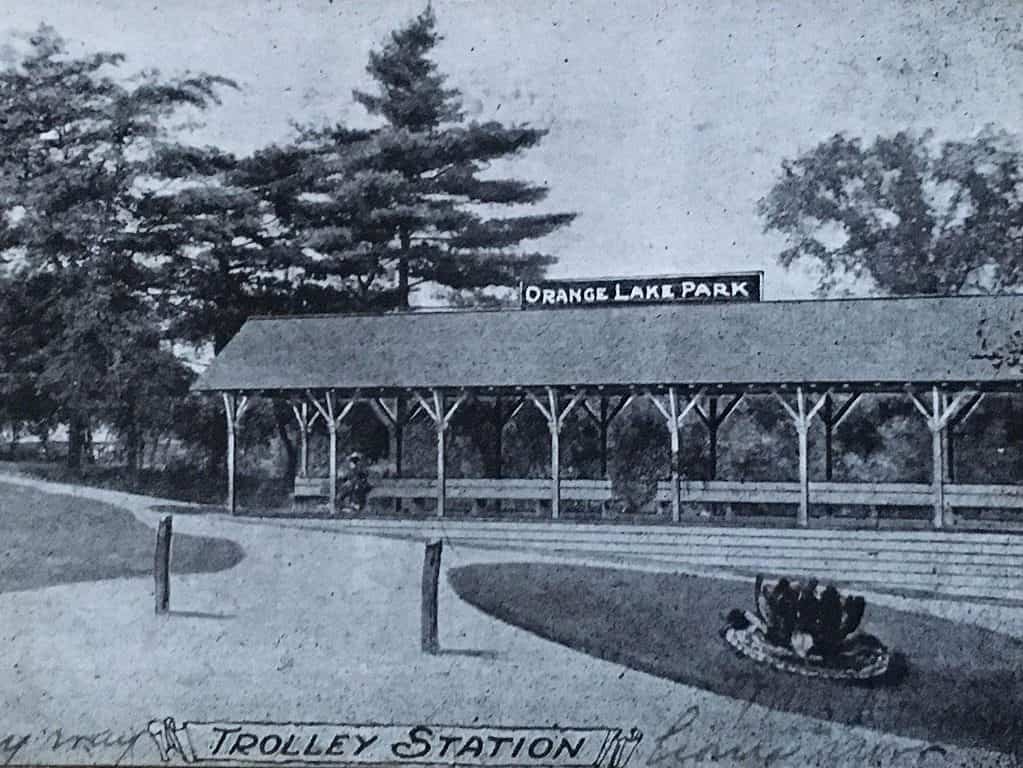

The main line was the same as horse-drawn cars; it began down by the Ferry on the waterfront and then went out to current Wisner Avenue. Another branch went from the ferry terminal out to the Balmville tree. Several shorter branches were added to the line in time, from Liberty Street to Renwick and then out to the New Windsor line on Bridge Street around 1900. Then in 1903, a branch was built down Lake Street to Muchattoes Lake to access the icehouse facilities. In 1909 a branch was built off of Broadway onto Lander Street, where It turned right onto South Street to Liberty St, then left and out to Water and to the Balmville Tree.
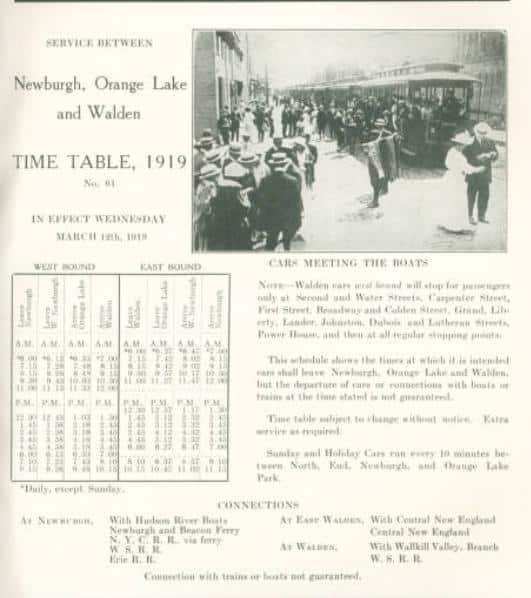
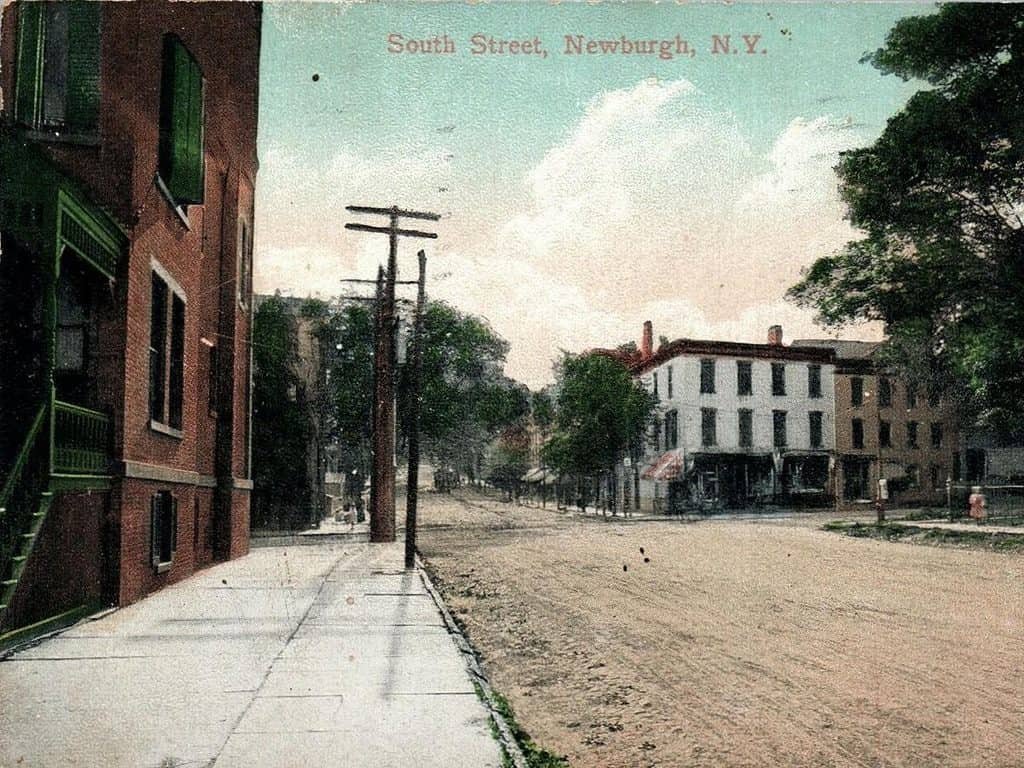
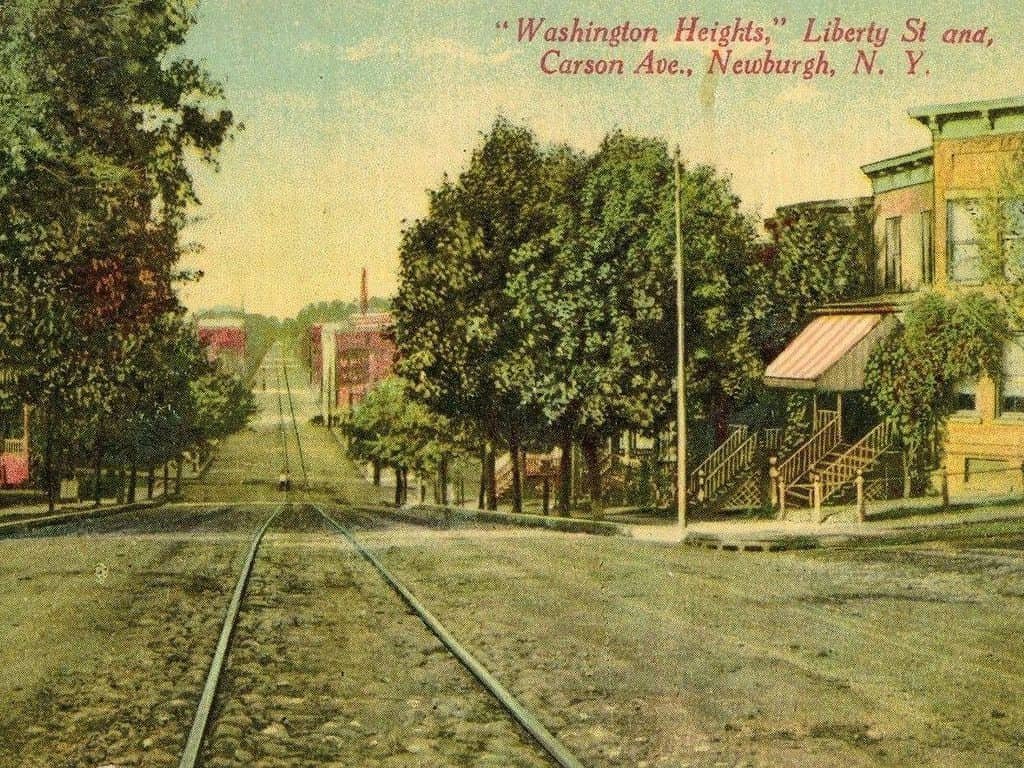

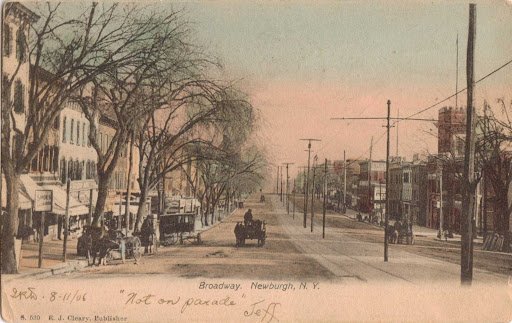
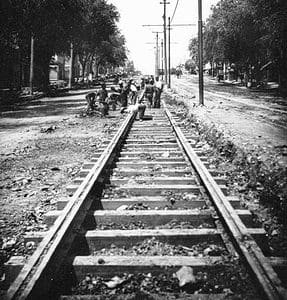
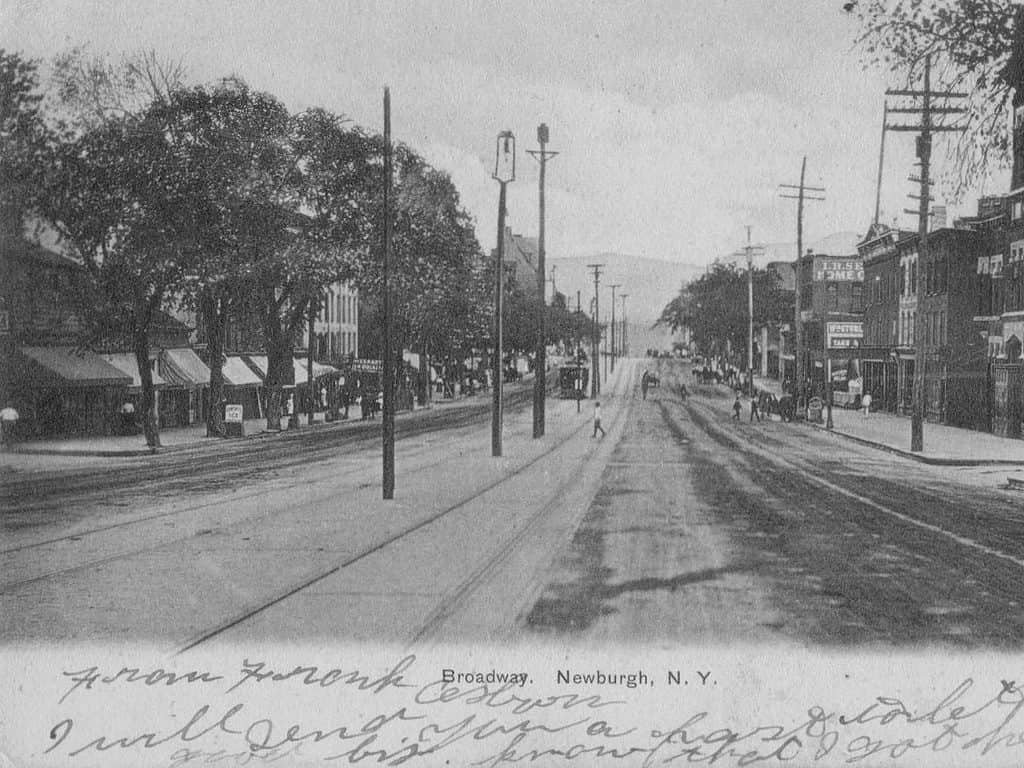

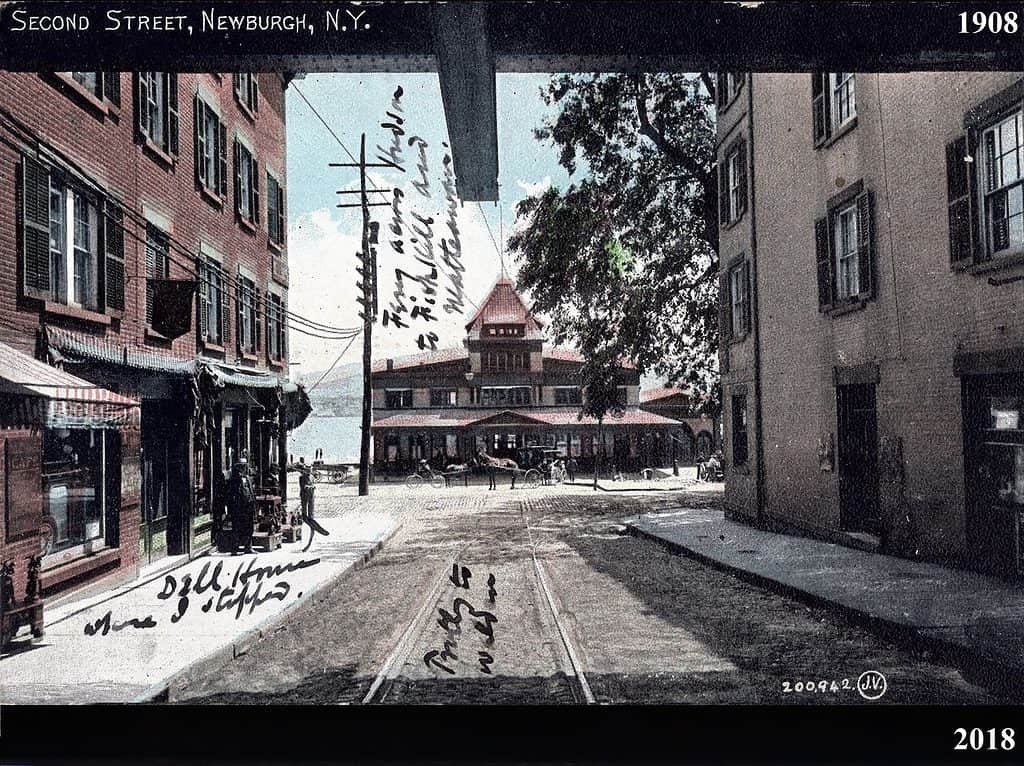
At its peak in 1912, the entire length of Broadway was double-tracked, and there were 20.5 miles of track. The equipment consisted of 35 passenger cars, 12 trail passenger cars, 5 service cars, 3 combo cars, and 2 snowplows.
In July of 1894, the line went out South Plank Road (52) to Orange Lake. Sometime in 1903 the trolley company greatly expanded the amusement facilities at Orange Lake. People could arrive via the trolley at Newburgh by steamship from NYC, Albany, and Poughkeepsie. The Erie and West Shore Railroads could also bring people to the Union Station and from there they could board the trolley to Orange Lake.. From Walden connections could be made via the Wallkill Valley RR, a branch of the New York Central RR from Kingston, and from Campbell Hall using the NY Ontario and Western from points west.
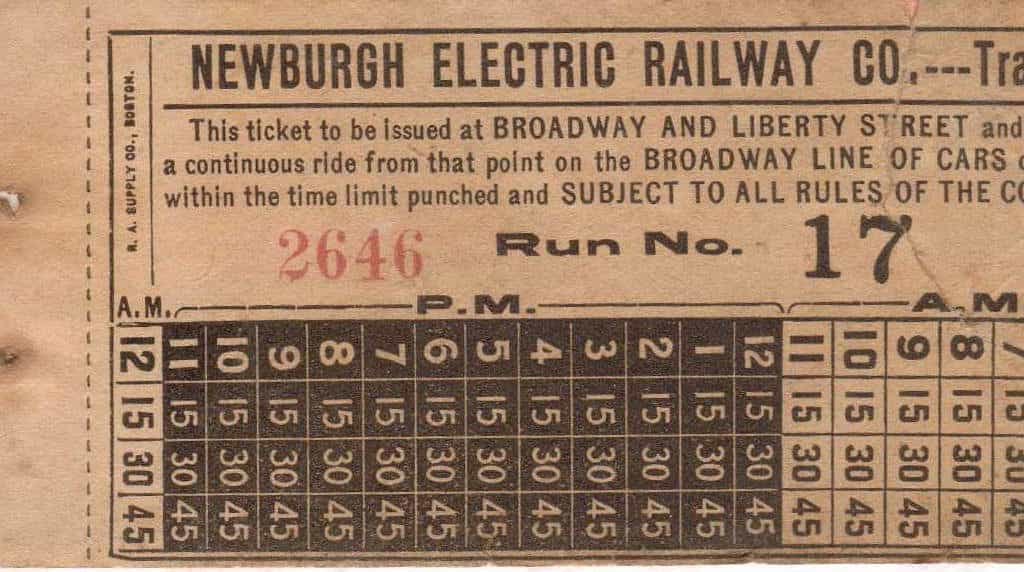
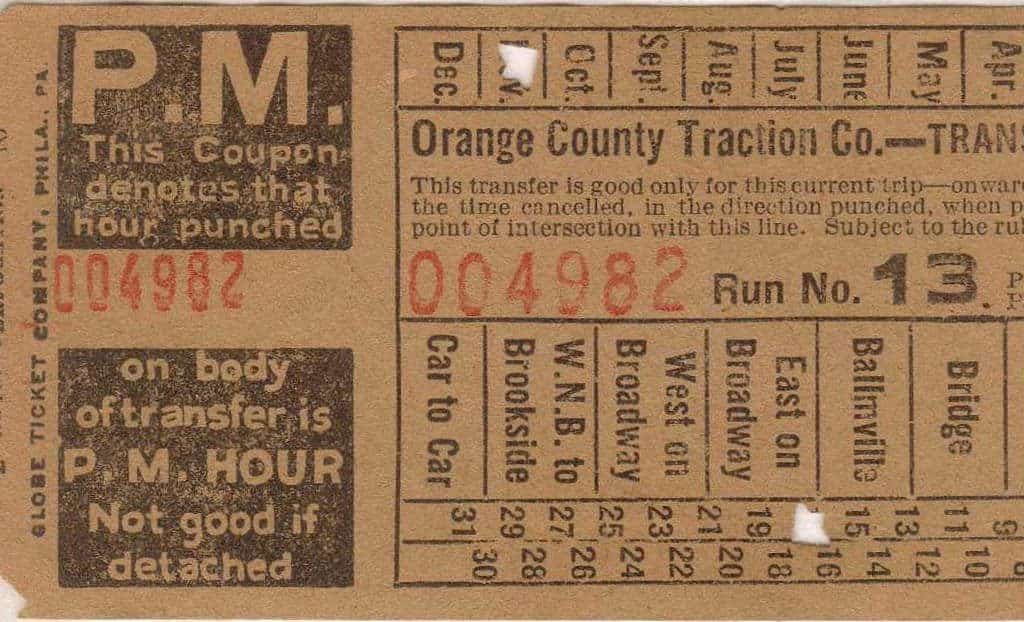


While we think of the trolley as a passenger mode of transportation, freight was also carried between Walden and Newburgh twice a day, along with farm products from the Wallkill Valley. In the fall of 1895, the trolley company hauled 600 tons of hay and 200 tons of grapes from Walden to Newburgh. There are many ads from merchants from the time of the trolley mentioning their goods are shipped via the Electric Railway. The Wallkill Valley Cemetery, outside of Walden in one of their advertisements shows the Electric Railway with cars from both Newburgh and Walden stopping outside their gates. Some freight cars were multi-use, snow plows, brooms, sickle bars, and sprayers could be mounted on them to use as work cars too.
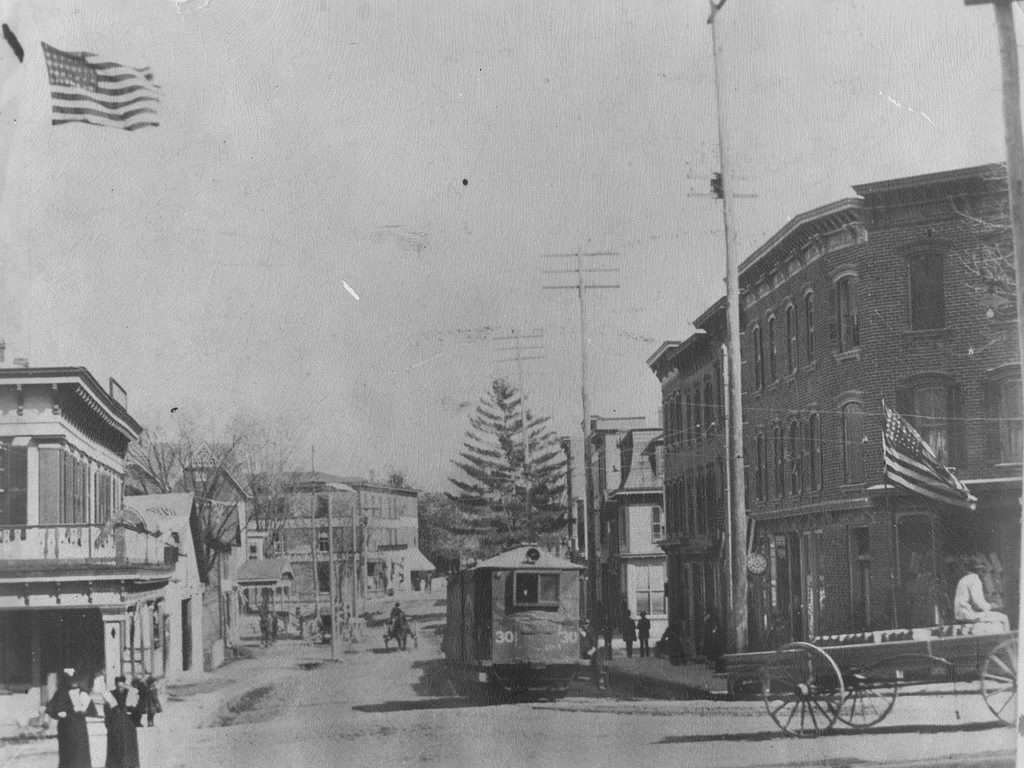
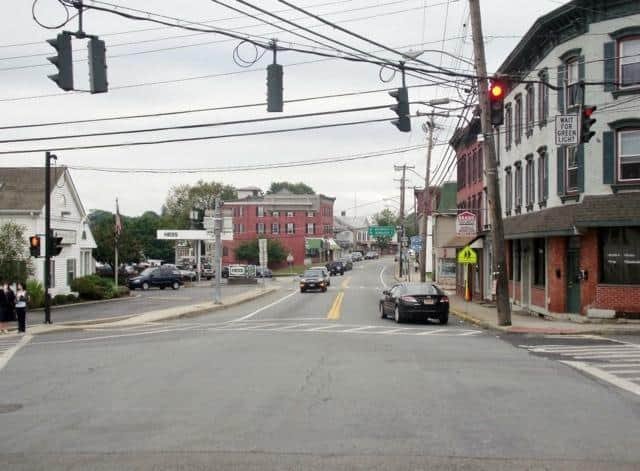
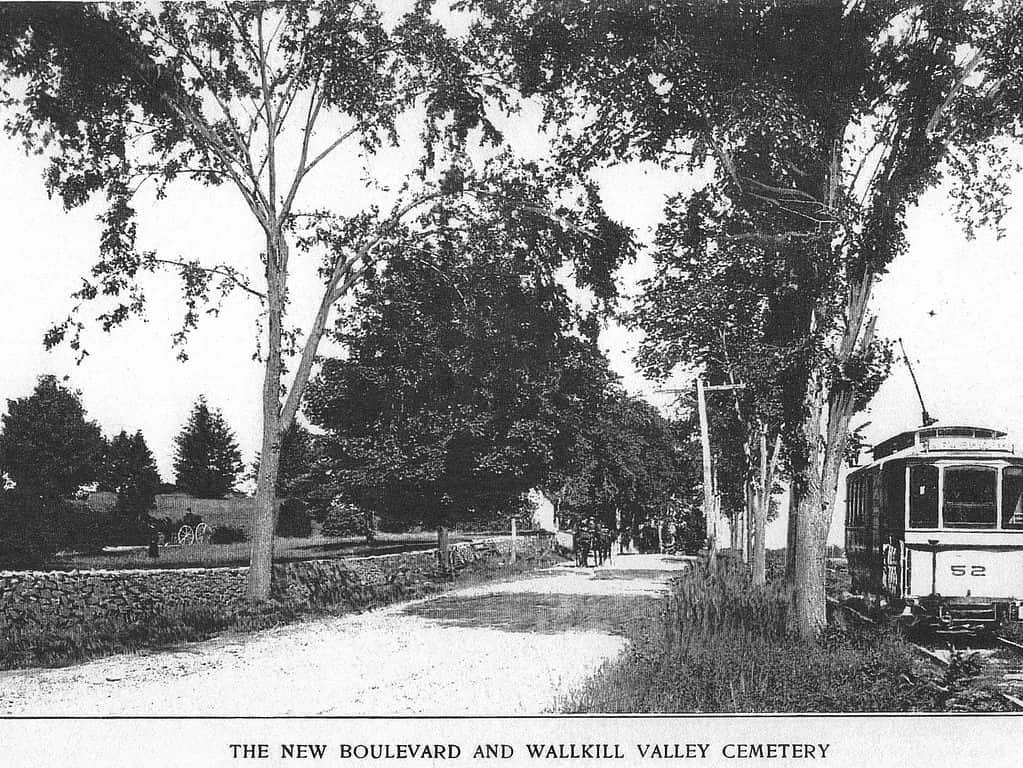
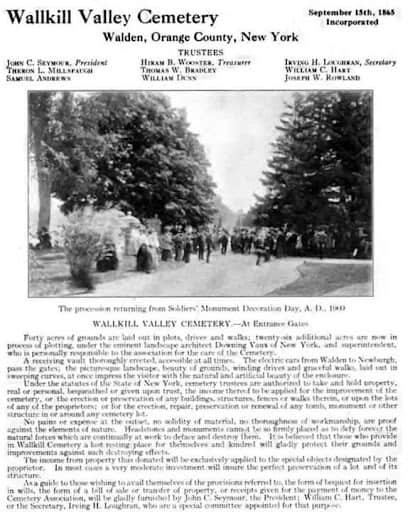

With the connections to Orange Lake and Walden, the trolley was now an inter-urban line, the same as Middletown and Goshen. The line in Port Jervis was a true trolley line, as it did not connect different municipalities but stayed within the city limits.
People from both Newburgh and Walden could now travel in about one hour, not hours (or days) between Orange County’s largest and most prosperous city, a premier tourist attraction, and a vibrant manufacturing community with railroad access to the western part of our country. Prior to air conditioning, a summer ride in an open car was a joy indeed. When the Orange County Fair was held in Newburgh on The Heights, electric cars ran there. Before Orange Lake amusement park expanded, there was another amusement Park in Newburgh. It was located on the city line where South Street and South Plank Road meet. Goodwill Fire House is located on the site of the former Glenwood Park.

Many interurban lines suffered the same fate on weekends throughout the country at the turn of the 20th century, a lack of revenue compared to the weekdays when passengers and freight kept them busy. Around this time ordinary people began to have a bit more money in their pockets to spend on “frivolous” items. To solve the lack of revenue weekend problem, many interurban companies built amusement parks, baseball fields, zoos, bowling alleys, etc about halfway between the municipalities they connected. Other weekend discount trips were given to civic organizations and discount tickets from RailRoads and Steamship companies for the trolley ride and entrance to the facility along the way made for an eventful trip for city dwellers looking to escape the stifling heat of the metropolis. These amusement centers were large money-makers for the trolley companies for many years. Also because of a more reliable means of transport, many cities now had suburbs that workers could commute from. It wasn’t uncommon for real estate developers and trolley companies to join forces to build early bedroom communities in the late 1890s and early 1900s.
The Orange County Traction Company made money using the above formula by building up the Amusement Park at Orange Lake. The Lake was already a tourist destination prior to 1894, but with the trolley stopping at the Lake, there was more money to be made. In 1903 the amusement park was greatly expanded, each amusement park needed a “hook” to draw people in. The major attraction at the Amusement Park was a Ferris wheel, along with many other rides and attractions. There was a dance hall, a Japanese tea garden, concerts, and a roller rink among other things. This was a family entertainment place (“dry”), and alcohol was forbidden as drunkenness was rampant in America at this time.
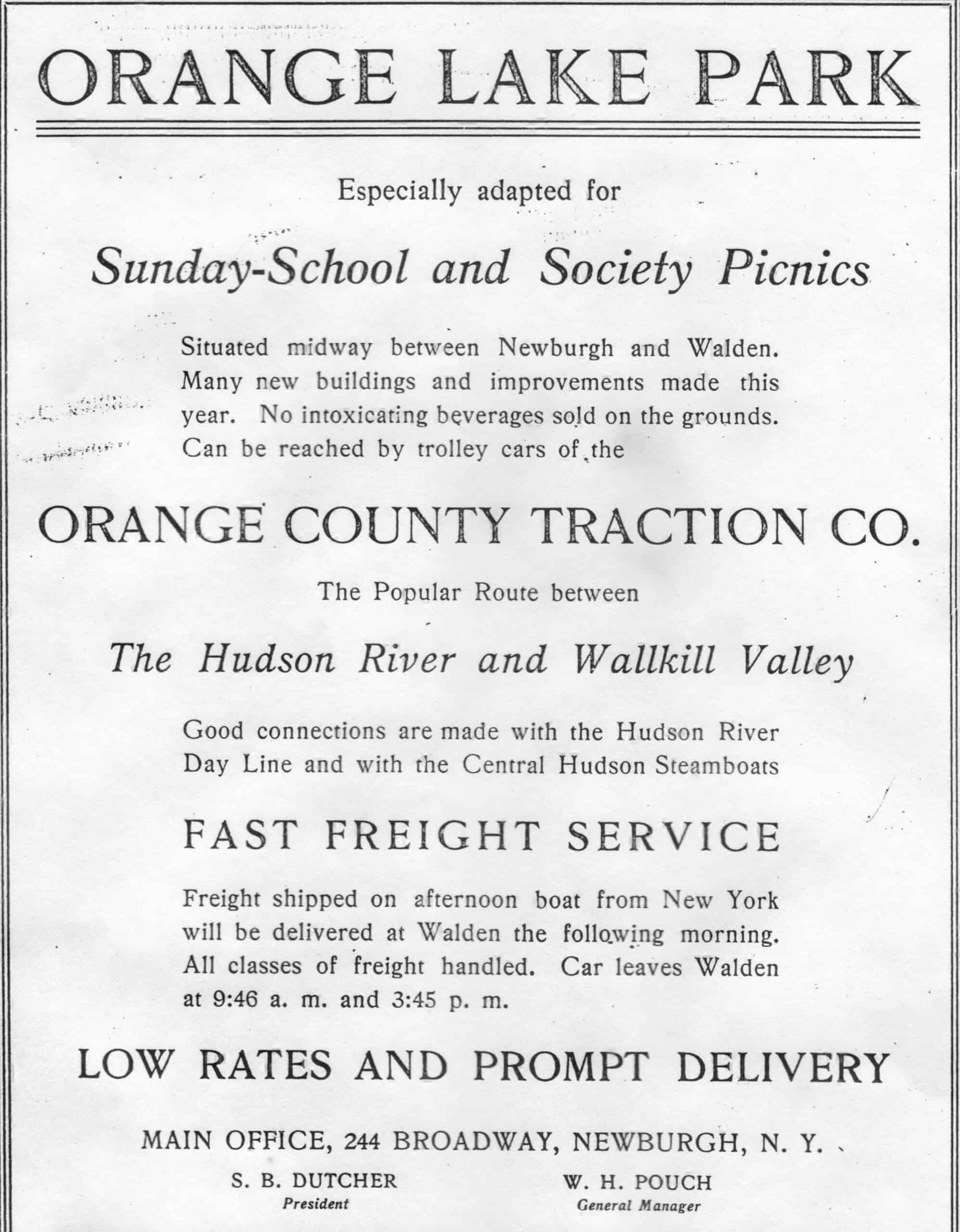 To get around this rule, there was a halfway house (bar) located on the corner of South Plank and Patton roads. Amusement parkgoers would have a last chance to tank up before entering the park at this establishment.
To get around this rule, there was a halfway house (bar) located on the corner of South Plank and Patton roads. Amusement parkgoers would have a last chance to tank up before entering the park at this establishment.
On a much smaller scale in real estate transactions, in 1900 the suburb of Bellevue was proposed in Newburgh. The streets in the suburb are still in use today, Orchard, Larter, and Hawthorne was formed with the ease of getting around town with the electric street railway.
In 1903 the Intervale Traction Company was formed with the thought of building another trolley line that would connect the Wallkill Transit Company (Middletown Goshen line). This line would run from Goshen to Chester along current 17M (approximately) to the Erie Station in Chester, then turn east through the black dirt south of current 94 then onto 94 in Blooming Grove, Washingtonville, and Salisbury Mills. At this point they weren’t sure if they should continue on towards Vails Gate and up Windsor Highway (Current 32) and connect with the new branch the Newburgh Company built at the Newburgh/New Windsor border the same year, or to go build their own Right of Way through Salisbury Mills towards Orr’s Mills and turning north near Firthcliffe at the Ontario and Western Station and on to Newburgh from there. While all this planning was going on, money was wasted and the plan was abandoned.
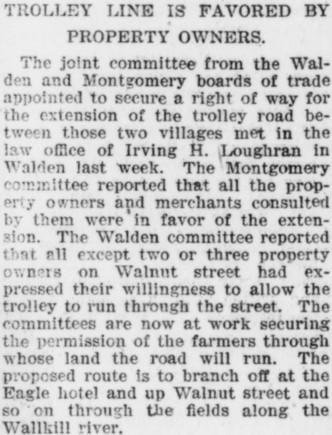
Although the grand scheme in 1903 with the Intrevale Traction Company failed, the idea of connecting Newburgh, Walden, Goshen and Middletown with electric rail service never did. In 1914 another line was proposed, this time leaving Middletown along current 211 to Montgomery, crossing the Wallkill on their own bridge, then on River Road (County 29) into Walden. World War 1 put an end to that thought.
Another thought was to go directly from Goshen to Newburgh along modern 207. Another one was proposed from Goshen along 207 to around current 416 and then onto 211 into Montgomery, then cross country into Walden. Again, these were mere ideas that never went anywhere. although the 1914 line was truly explored as a viable means to connect the two electric roads.
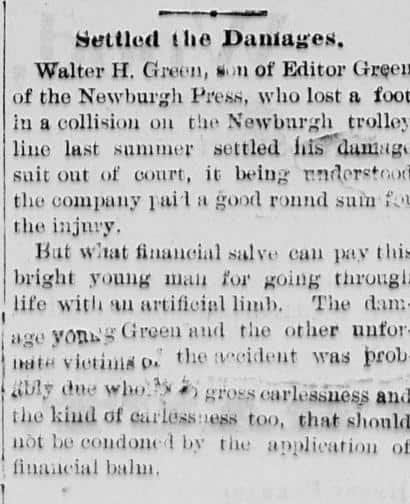
While we have romanticized trolley travel, things always aren’t what we think they are. Accidents were frequent and sometimes fatal. A young boy was killed in a trolley mishap in Walden and on September 5, 1903. There was a head-on collision just west of Glenwood Park, the site of the current Goodwill Firehouse. After an investigation, it was determined the Trolley company had sketchy (at best) safety standards, and new rules were implemented.
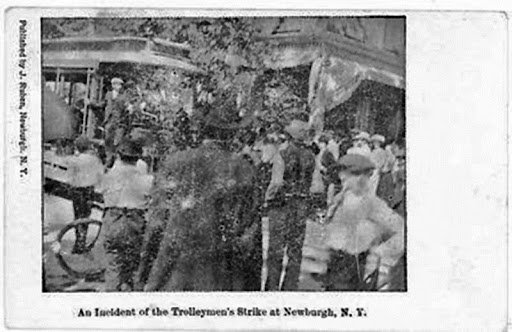
The wreck occurred near current Rock Cut Road ( Orange County 23) and South Plank Road (NY 52). Provided by Lynn McCarthy and Kris Rizzo SammarcoWhile the Newburgh trolley did make money for a number of years, unlike its counterparts in Middletown/Goshen and Port Jervis, along with lax safety standards, labor, and management had a very contentious relationship. Strikes were fairly common for a number of reasons, but the beginning of the end for the company was rapidly coming on by the 1910s. In 1906 the Odell family purchased the line and contrary to popular belief didn’t make that much money with ownership. Labor strife had calmed until 1911 when there was another strike when a member of management struck an employee. Even though he was arrested, the company bailed him out and he returned to work the next day with a promotion. This infuriated labor, which went on strike, and even Mr. Odell’s calls for civility couldn’t calm things down. After a few days, things turned deadly after this strike, near current Rock Cut Road, west of Orange Lake, a head-on collision occurred between a freight and a passenger car. There was a fatal injury, along with several serious and minor injuries to the crew and passengers.
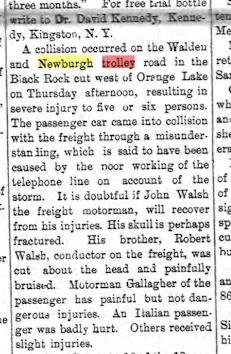
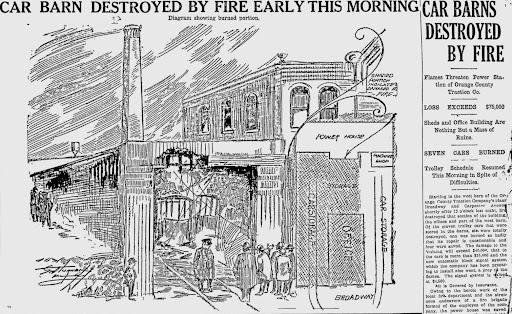
By now better roads and less expensive automobiles had begun taking over people’s transportation needs. 1912 marked the true start of the end of the line with a fire at the headquarters on 244 Broadway. Over $75,000 worth of damage was done, 6 cars were destroyed, one was ruined beyond repair and a new signal block safety system (which was supposed to have been installed after the 1903 crash) was also lost to the flames.


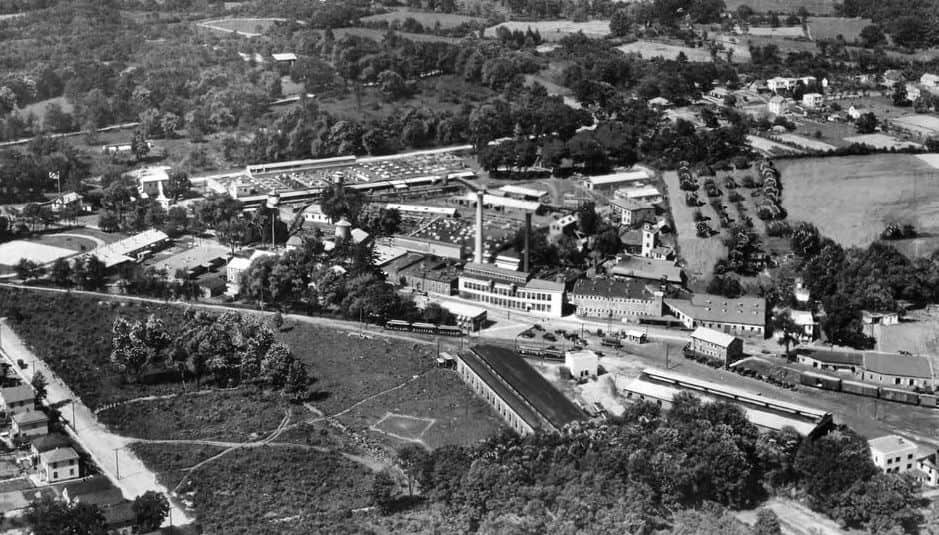 From 1912 onwards saw more years in the red than in the black, over time the branches out to The Heights, Bridge Street, Lander Street, and Lake Street was slowly being shut down. In 1916 they were dealt another financial blow by the Erie RR. Since the trolley began service, they would transport goods from the Fabrakoid plant to the Erie RR. The Erie built the Dupont Branch just south of the city line on NY 32 so they could cut the trolley out as a middleman. This move cut into the little profits they were making handling this freight. The trolley company sued the Erie RR and won the court decision, but the cash award was a pittance to what they were making off of Fabrakoid and needed to keep running.
From 1912 onwards saw more years in the red than in the black, over time the branches out to The Heights, Bridge Street, Lander Street, and Lake Street was slowly being shut down. In 1916 they were dealt another financial blow by the Erie RR. Since the trolley began service, they would transport goods from the Fabrakoid plant to the Erie RR. The Erie built the Dupont Branch just south of the city line on NY 32 so they could cut the trolley out as a middleman. This move cut into the little profits they were making handling this freight. The trolley company sued the Erie RR and won the court decision, but the cash award was a pittance to what they were making off of Fabrakoid and needed to keep running.
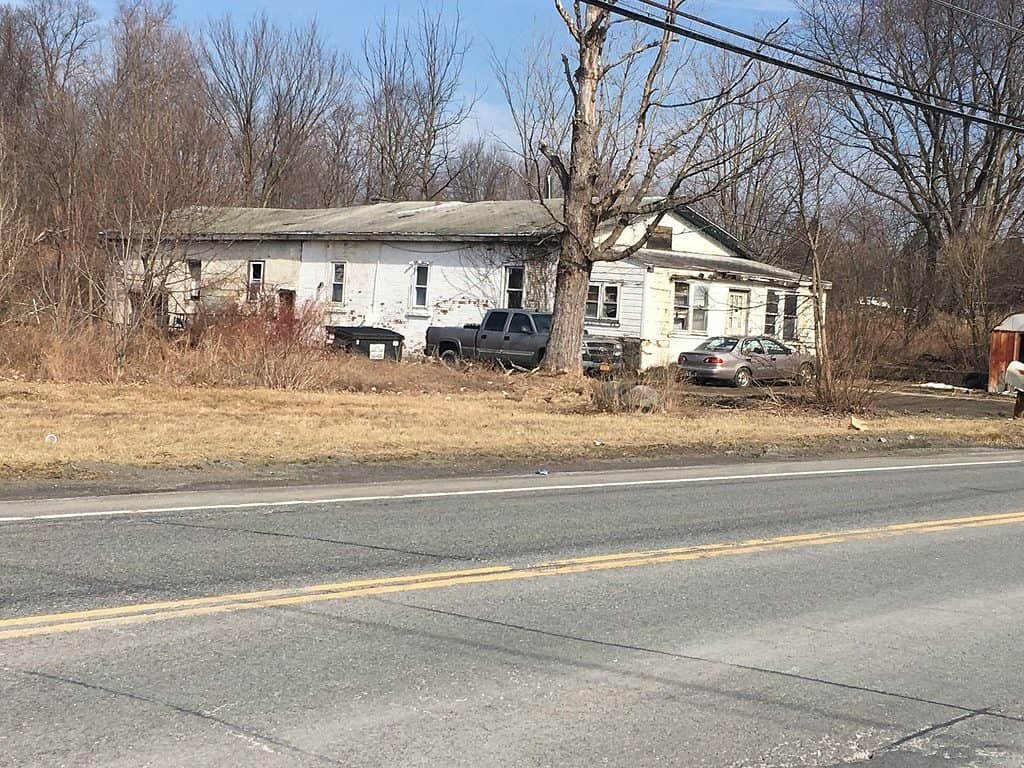
A bus company was proposed in early 1922 to run from Newburgh to Ellenville on South Plank Road (52). This was technically illegal, as they weren’t following the charter for the trolley system. A public hearing was to be held in Newburgh about this matter. The people out in the town and west towards Walden did not agree with this proposal at all, especially the farmers in the Town of Montgomery and surrounding areas that were served by RailRoads. In 1921 just to the west of the New Haven RR on NY 52, on the Walden village line, many local farms built a milk storage co-op so their milk could be transported to Newburgh on the trolley. When word got out they loaded themselves into any means of transport and went to Newburgh to argue their case, but it was for naught as in 18 months the company went under, succumbing to a bus line.
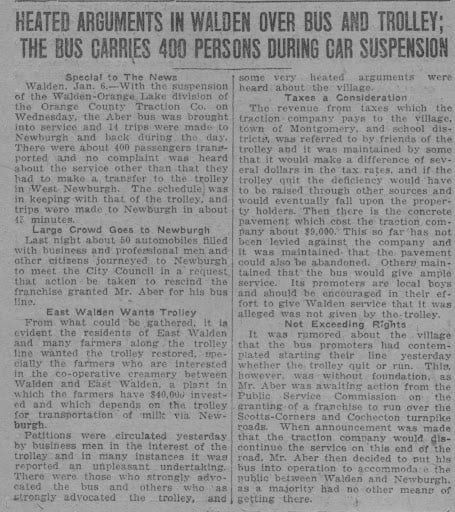
Or did it? Records show that in 1924 and 25 electric car service was in use during the summer months from the waterfront to Orange Lake and in 1926 and 27 a gasoline-powered trolley bus did the same run.
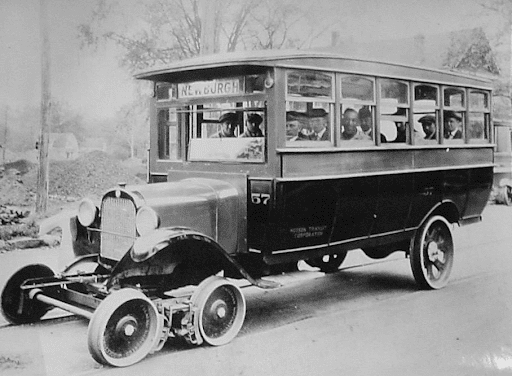
While many of the state roads in Orange County were realigned in 1903 or so, 52 wasn’t realigned until the 1920s, probably because the trolley was still running then. Next time you drive out to Walden, notice near Algonquin Park how the road veered to the left, all the Old South Plank Roads, Lucky Lane, and private drives on the curve near Stewarts near Orange Lake, etc. There are trolley tracks paved over these roads. DuPont Avenue from Wisner Avenue was once a private Right of Way for the Trolley, as was Old Balmville Road from North Street to the Balmville Tree.
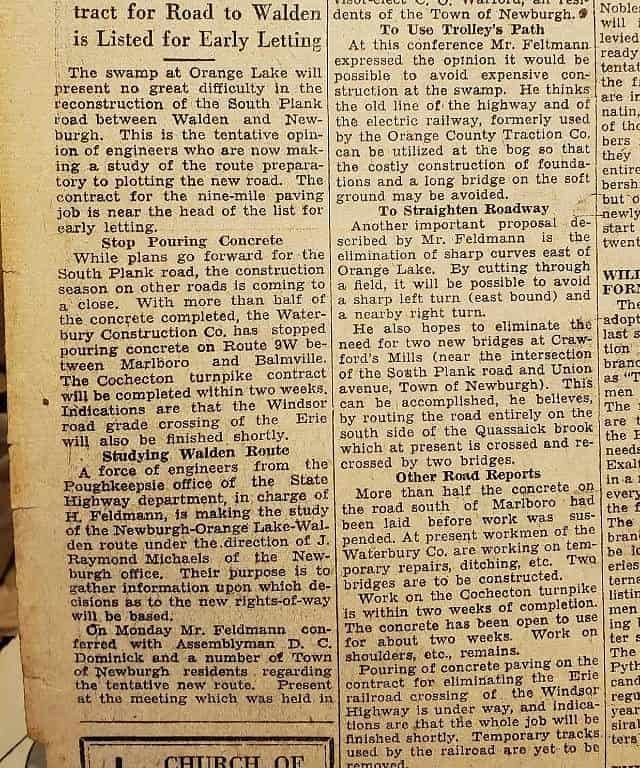
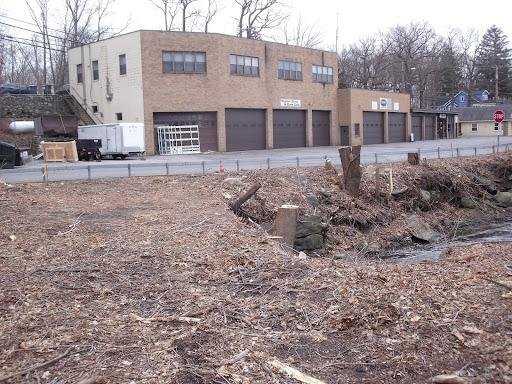
If one knows where to look, remains of the trolley can be seen; 244 Broadway, prior to being paved over, the parking lot by the old bus garage near Winona Lake, nearby, the old bridge by Winona Ave, and prior to 2022 when it was pothole season, the 208 & 52 overlap in Walden.
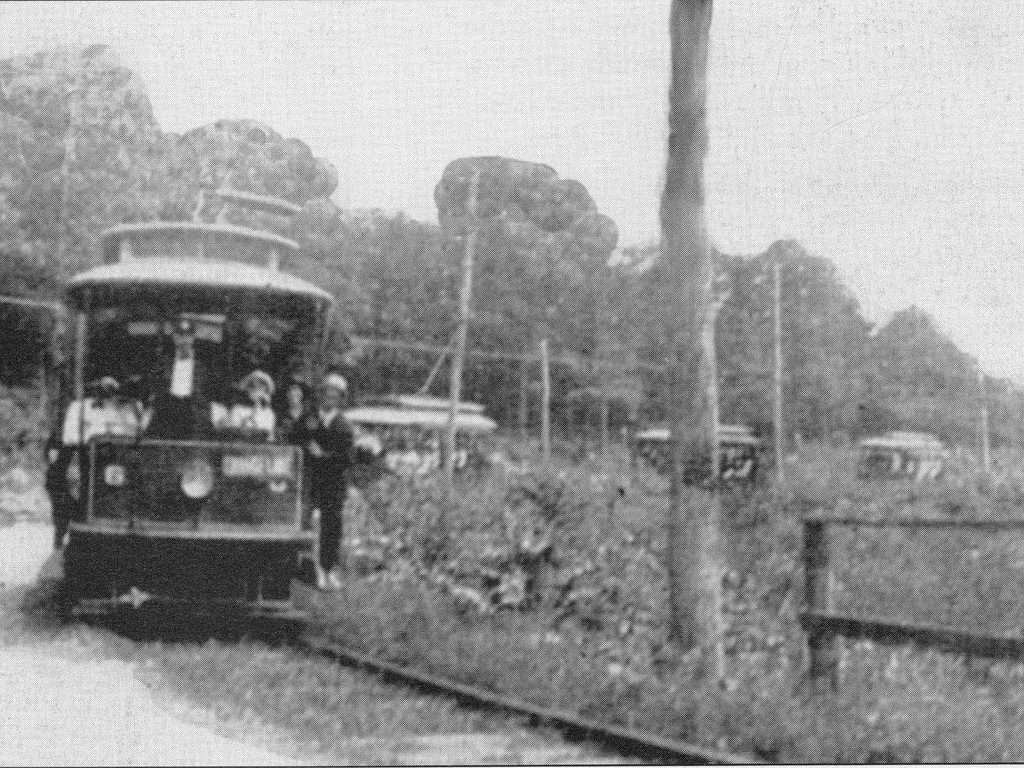
The electric rail systems in our area had a short but colorful lifespan, but like the horse-powered cars they were replaced, because they were more convenient, once Tin Lizzy and the roads were improved, they were passed over to memory lane.
Additional credit for assistance with this article and providing photos to Joe Santacroce, the City of Newburgh Historical Society, Mary McTamaney – City of Newburgh Historian, the Newburgh Free Library, John Hudson, Russ Hallock, the Ontario & Western Railway Historical Society, Lynn McCarthy, Kris Rizzo Sammarco, The Whittaker Family

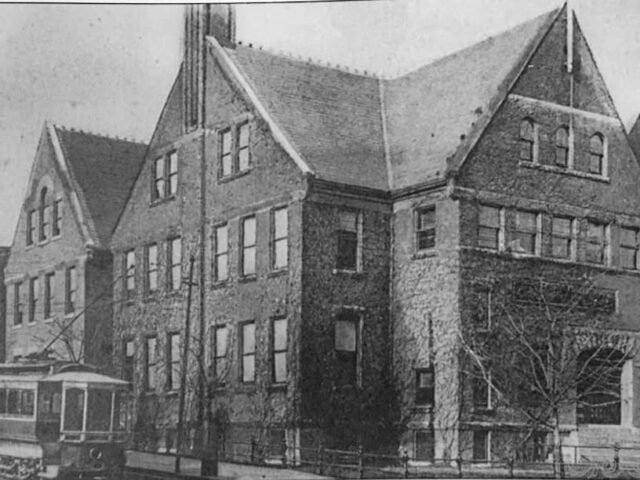
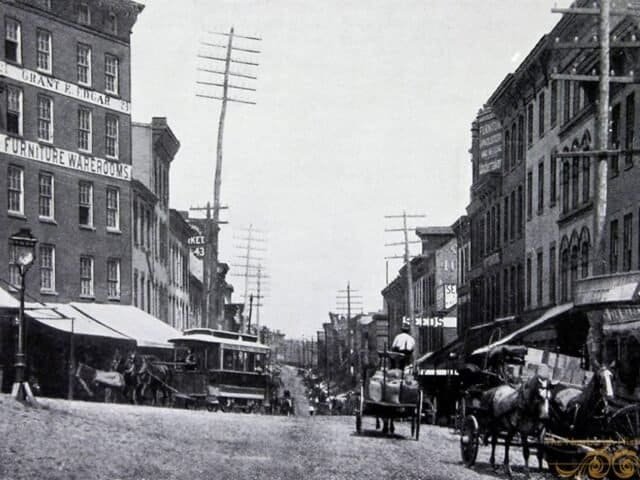
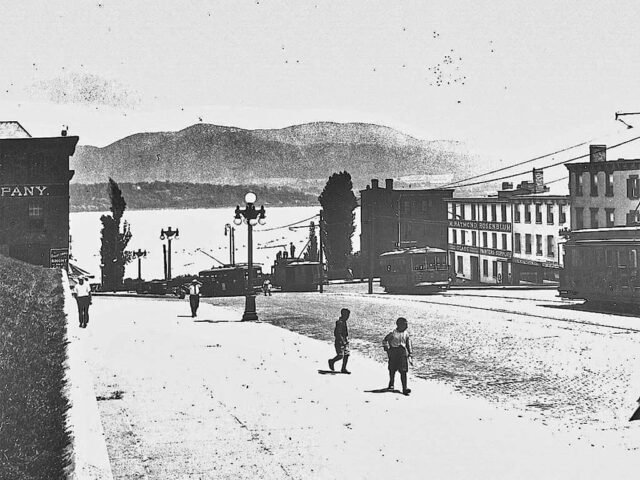


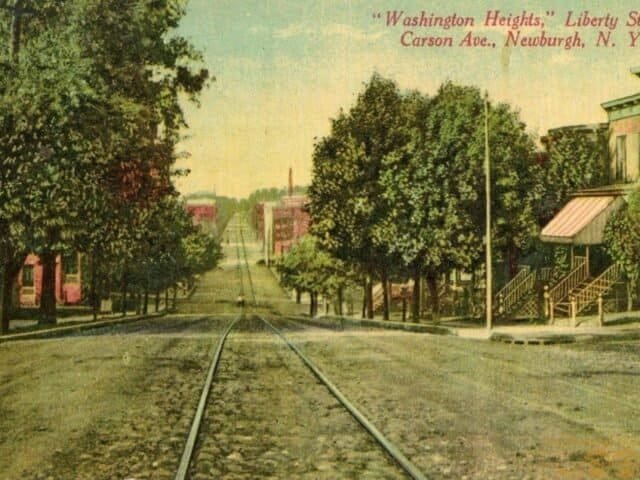
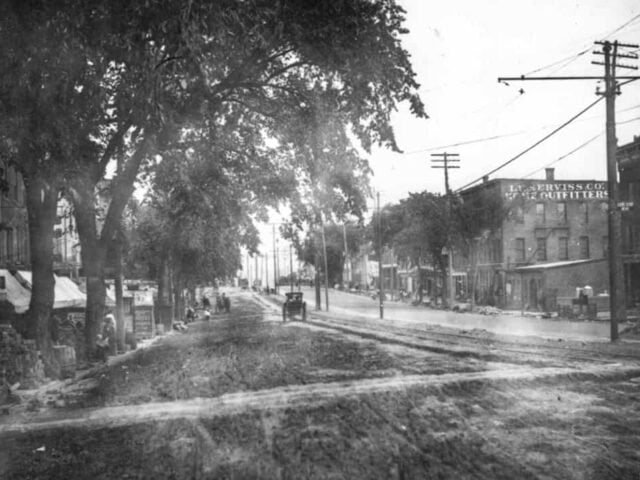
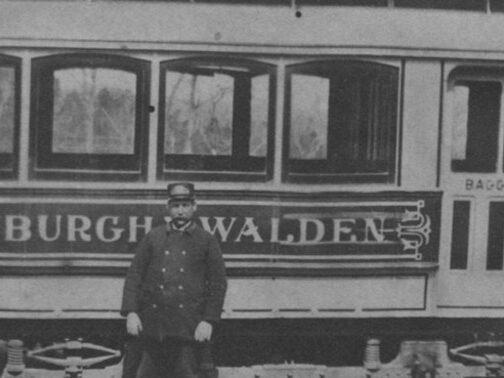

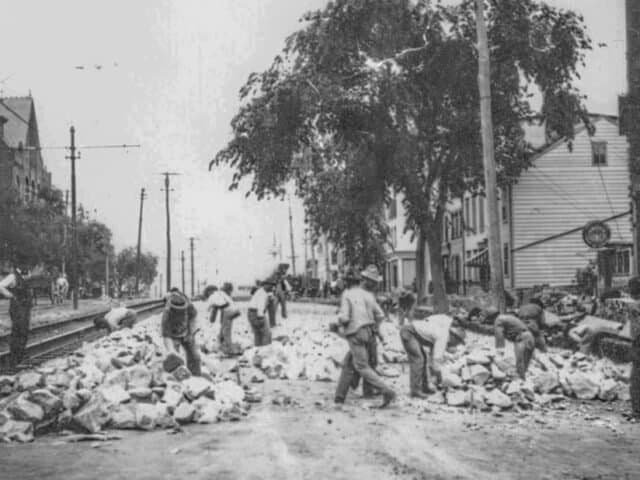
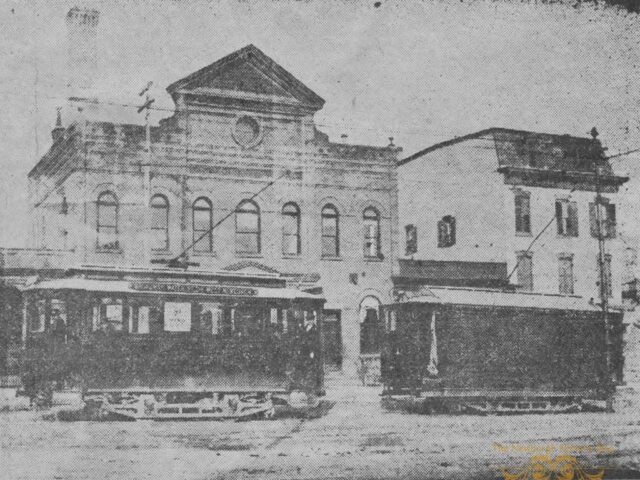
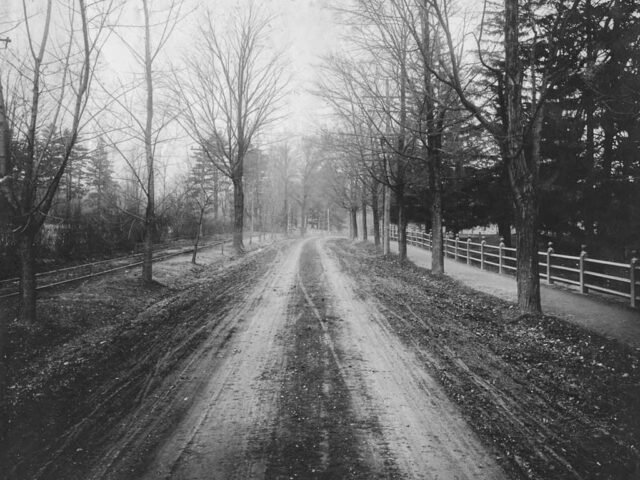
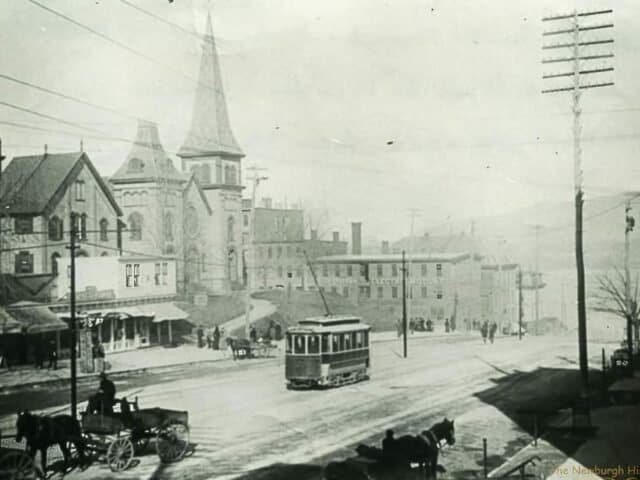

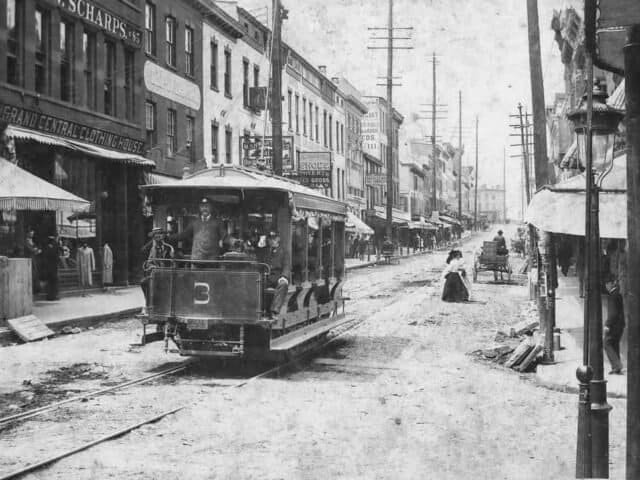
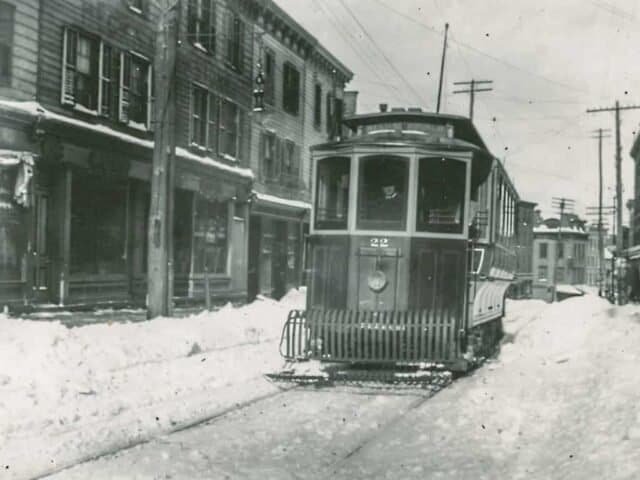
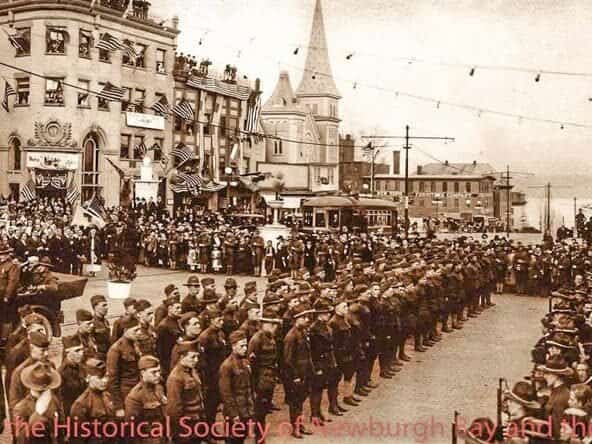

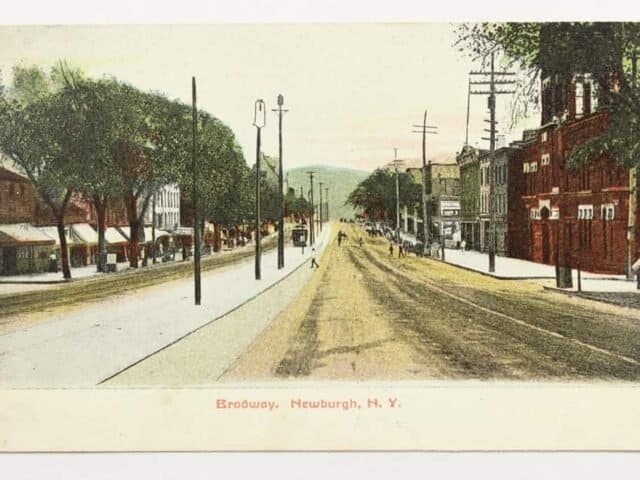

![ì«ÿ?ægZ4dª/4ºU+&rxÎA?UG/ö1TmöĶÏês[pí°;T²°§ÂO-¿áqV!©ùnãOæûGF¬$´hæÕÝJâø¸·òý¾_kaº¬:_"³}%nté#!eäcßãDáû'ÿ¨ùjÿ÷ê zFZo@bN¤{â¯IÒ.u]QíãÕÞ½}ÖFQ$ÞpuCO´ë¢àZOn
IY{2¸¨8«µ_,ÚK¯é+-¬SY¶-åÈAVõ-]> AâN4ÿW*ɵô½A¾Õtûxn,àw$h¢¨I¥TTré±0ZÛjº·izÆMÉVâÁlã½O&ÅQ~oõôÍ[ËrL¯ªèÜ
Õ@JéQíþëá¦ÿæfÒo%Ì®ªp
!ÝE{b©Æµ~-¡ÅìV²$.ÀJ
±=ÈðÅX¯õæ}?M²EͧªCÄ'Ôo²OÄ8òÅYR@Ĩû,(GÌb«{}8«`7còÅU¢
O|ñUaÉwã¾*²ZþSþûüܳԸªÚ¨Ü7O_ø¼3óU½´(mY^å&Q°Ðãa*ñ£/µ°]Â[Öü.5>%Yíã3´²í^-ö×ý*Ímͺ+v9·
IYyÈR$FPË' íz~§ÅöqT' VÕí4ûÐR ÍÔÎõô^7 5èÌ^D¨¼þ,U1òºþ4¥K]&âíÌ|7wæ5ròZ;dãøòÅ_ÿÔaò.4íw¥M%
Ñpí¨iL#£þZm
EþOµ{¤ùN³72Ø0[$óH¤^;¼°1^N[íEéÿ²ÅZÒ¼Á ks
ï-B2[;6×/Óã
¿±¬Öü¥¦ÜÏoq;A®?¯[?£2«øµÿbÊÊتUäÝ{^¿óì«p¢E1ïIdæµd¨YCSðÅ^ñG,ÒE,k$2ÆÀ0`k±µÅX¿ÿ/ôù-n/-¨^Þå[öLS8²¯êGü¾*¡ä+5]ùNY¾½qóÛܸfF¶£ê(ýùqoòG«{oqmpC¤Åãã¦h¼>ÜMGañ~Î*ǼÅäË=@#ÂÇO¿XÌ7àG%Tú|QÊJ¯ÿÙ7,U%Ó¯ç±×á²ókmIwú EµÚÊj !§Úøy6*ɵ]2ÛPâÕàÍ%zvº²°èÊÈ´eÅUíµÚþßNkvYÖKyÖõH+''
ñ½wäFÿg³oU=^OJ#TÐPõÅP^uuéÁý ÜTѪÙlUèòÖ)îd³__ü-ð¸'§qWêVwºæeÍì@ÇÂåbYP~ò'·§ð´f¿Ïü˽·òÆÇâi;É,¬JE9PoÜÐbªþifF§ðÊT[H>Ê4f©Ð×âÅX÷<¶Ú}ÝGzÜ:ºjÑ!w? ?ó'Xª]ªj7æ³xdµèõfôÌáâ©#ü*È:}¼UOËÖpGuisrSÕ¼Þæâ6+4ÇûÉþÏÙÅQú¯æ%æcª>ú;-c"¯0®(8 þþòOølUÿÕÙyTÓo½5IdqÛââÜdý*ÊôÿÍ¡°ÃM"E5`¦@»I7þSËdòëßþpSkæ$7&ª/a9VædUI¿-üÉiÖ¼¡¯G®éGtÓ5V=+øÔÅPYòæ©?LjZtºMÕÕ¬°ÏfáY£dUu>9ðþÞ*ÍÌ%Ès¾õ8ªíVkY
Ußq÷â©7åðÅÅMIÔõ#÷ÞK«^hMoÄUð"*Ì
0;0ßì¶*ŵ-NÛC½··×Ý-
Ìè×@«±BìA6äÿÀbªú¶msawU0´Q°J+
ÌÊyTÿ/ÚªZö÷°kÀQ
μD-ÀþfGìðÅWØÂ
îõ«I!.G(8×O®¯ïlíäKÓM5Åç ê H'ÉEü*¡¥kvoò°GÄKsnaTsÑ?éâ¨k{y ½Üï"Úú%XnÕ,`1T£TÓ¥¸2/%ñD$ÖR¬ÂþlkþV*µ5Ý_ËFÒù%hô¤Ô-Ö$É.-§,ËÇâû2ñïɤÿ'eþgó-×n¦¶)"_ƱÈ9ÉÔÝKn£Sòÿ¤Ôu=Kt¶
´Øä4µz4ÊBÔUÚ¸«(i{ÓcÜoú±VÖZo÷bªèÛÅU#g`B %¨ ?p©8ª¯Ö-¡
^âd9øyö±VwæíLjVzn
4N)^ -j>Èãªh_]õo5mSÕyeºáÀÁ N,°!ª·"Û»/Nµ6¶F+ë·á$"ºGôɵójSò©ûXªI CæmsLÐõs¯%½äVSXIáÆ)ø¨?°JÕ?ËÅ_ÿÖå^f°ºwÇ-¸¨JKK¨ð']v7÷«m<r:ÏE¸ø·´oÇdzw=²ï3CÉÔÅAÙºÿañTÆ4ê·wl÷ÓÀêáw'JzQþW<Uy/þr;N¾-<×gÂAkÛHÚHB©£Ç@jÐ<JÉ2m¨Õß·*Çÿ.ÓË.jH{ýA÷ëñ]ÈqTØof®ÉO¼b©V·¦iú
b½e@ÓzUã^eÔüÅäNh4GÑ'@§ÈÆÌÅÀÖ&<iHÿwÿ|Xª6EÔZúÜ4ØZHÆJ î%=)A<{7¦Ñ?ò¯ìªâ¨¿&ë÷zâdC¤Ä G ¢ÜBÊÈë2³0ت!NÃÃED*ûñW~`Ük7?[ê!ÓlíXX«³vHË´7ªÌe[ýÕÿªýR³2ØÙéòDk˪ªû÷¶DCýåYy£3Sìâ©?4´8Ä-4ûK©QýUUãW&´j?ÃþËd¾z¸òÄ:bÝJ·F>n_-
ru2q§Ã²þÓb¯/Ðô[FÄ+¼ÐM*]ÛýÞÿ°¼þ´kN´×/cÛL£¶K KÕPÐJ²±á0UYè8ãôùqçûª¦¹i£èÑnÐKs,¶ï¨NëÊHuidx^CA'û<Uåë;ÏñuýE/½HµÛ$GÇh¤ü
¿·þ²¯ÿ×å/ù{æL:t<ÓPEÐÄ*6تq?åÞ¬[ËfdoH´ê8b
«)ø¾??oZ4_Ì]"Òôøn&/°
àâ0ÿeºú<êÒ&£¢9_U.-ã_XVAþűTÓÊ^d·¸õ&Ò¡x©F[» ´äzÃbã³ß-Ý®~gµ[MáÍ]momÚ$<âiÖg÷râ¯Ñÿ2<¹¨Z=zâÐHÛzh¥÷ û4eoö?ìñTÓNòÎigéhW*öÎòLÈü÷·ÜävûXªí.íaXîahÙxiUíÜm ¯=)Äô¼¿ó2 o<¼·Vþ´2êpÁ"(Ôáü_ n]qTÿ+¼Å¦Çv<¥|óC4¾«ÙÝ5e$r¬qÊÿõýâÈIýÝðâ¬-gy®îÛS±ýæKX"
!2<ünO'éTÇðü26*ϯ{olÓ¼
Â09*²o˳³$yÃ[òßGÕ'}Bîð ô¶Í@õ
±«zRÿÈá§)iz|Ýs¨=´ðYÝ̬ÒEBaãJì>4ÿ/öqT7æn£'øR[ci-°úÉHøÅ,eXú?Ù¡¯rþOUùëÌSÿ
bî8Þ(®l¦/d" `¼H¦þ:â¨_*ëvaó5åÞgxm&¸jäåÛ¡ý§ãþÃg¶wËy
`
÷úOlUrSðôðÅQ0oU2~ý1W~fª·t8¸;µÕ¬°*¥ís êÛ/Âb©5ltøÃ$P_ܼà©iíã *<«TãËýU3üÖµQ§é<7-%nîáhªµø^¢Æ<U(üÔõS@íÖêæë÷V¦$¨~HmëöSÃñüxªüõO,GÌ1ñYX
¤l²´i꼬¼×ØãÉ1V;{ç}Qí%)YMû[Ënî+¡XSÒ®ËNUãÇâõ1V9w¬^KÆ£0Fº¿ÃPÜ«xÃ#ZñÙÓOµñÿ½ò«NÔîùXÔFÍk§ê]Ü£`ÍÁÔ¯ªê6IrCÅ)øgÀÙãQ¿Õ8«Õ?-õËBÒé7FæÉ¢ôí
Ñs,Z Wãí+}ã¼ÛO^òÿþ©¬±úضÖÎwQÁ}j|L:CØ«(òaeqimps./ý. ê<p>*Èïu}2îÞÏMñ
Õ³ÄncB Êã½1TóONÕ5O'ÁÕ̱H²°2>u&
Oìb©µ
jO1¯lgi-Ã$}vVQGUETVû|üXªoùw'Ô`Ö#1ÈúeâD£Ï§$ì±PW·í6*Ït4-9P 9ȬAì±QÓnتbfE 3O@OS®IfƱqu±<jEGJ6*Àoÿ1üÓ
¥hv)¨êñ,i¨ÞÀe-fvUB90ø.*¦/<ïyLÔu
6îÑôy
ÂÒpH¥ï$¡%«q
©Çâûi»ÌºOno.¯ô×ÜÇ~.ÁHÌHÄ0¡D5x7/çûKõmGÌÚð³ZÍfë ¸;N*¤?4n_gâÅYbÐ[[ýc:EµÍÊ*UjTðf¥á D±©âÌwâOAö±V¯ÿÎ7jVºyEÔÖúé{1-:±Úý¼UãA*;-ÁXhiQ·P)µn¦A'D$Ö u§¾*¤áÊ´ñ>ª¶¬KgtÛ]´ýÙhqb**+½KÉ¿¡ôIçU5^NJ÷'B¬t
¹
ö|xª}¢ÿÎMêÜ}[Ò ¼-um'¦ãzVزUèº_üæåº^VrGðÉ4¡i·CÈJâ«õmcMÔÜé:Õã´·¸gz©¤
iQá¦Z6¢ébKýÓåJõ©~øªIæ#ÈÞbõ-5NßS±XP1<¿mXÒ6?iXüx«òöw§¼úUõ¿Ö´«ZâÞîÜ|äáé!8)Å»2ÿŪXkkyb0ÏVKÊEZóª~×?ølU[~bùFXÒïÒÞòx¤i½f Hcæ7ÅS¯8Ca¯yä²¼XÅÞmRH#õtüJx)û_Ë©ùvîïL×õXË<êpøÉ;FÔ!HäÿµËí+b¯HѵË-BÝ`fY<¿nw$tãû_ͧ
è÷Ä#§¦är$ü¥qVåŨ4<Ä@DÒ YüUV¤ü?µá¼çNü£»½ÔfÔõß4Áo%Ëe´Ò[Ó1Ü®îâ¼U8oÉ"]Ë,ú¥ÔÍ)äQn"Dʪ6ª§ü¨o"V±Þ_FÔøYnV v¡#GZ~SZYĦë&HùñúÜ"²¸«ä@xÒ©·Ã¤^SÖ.´Û)äv1YLÏ4ðÅê¨GìÆKñË&*ðK?U¦
(Y]VOK
8µ¾*ô+y®ûFó]ãÉiq¬ßh¸8¥,O%ãÄxü³²»¿7Üy;}3QÐ
^¾¥rgYÛP9?»*?gìâ¬?EÓ¦ý-kq·q¦¤%¢ÒÙPñÈò2N$ö Ëf~kòF¥®i3XÇæË_UJ°U#׳úi
Õ|UóÖ¯ùwܶ7®V"xÆÜëö¶åÇK¤Óàk{«éݹ´ôÑÃêª]+qP¾8ª43^×ËA¥¥µÄÔW£<ðâONjÏüO|Ñç=FËÍö:t1 $ûl¨áÛýriÇPÕ´ÏËí3QóÖ´ù®µÕÚÖÊk#¡dæßkýb¬oóC·Ò5tK]&]"Êtf·yÚá¥Çß}ªplUG̾NÔt=#DÕ'ek]rÙg¹0n ¸`6ý¬U-Ë×QE¢É"Æ[«Ù7ò(³íðügú¸ª±×|ɧÔgx"à,'ù¨£µYËj¶@zRÌIÐ7ÂcãGW?íb¬ÞÇ] c0N"ha)#HMY©ZµÁ~U)oÊ.íg6º?pw¶ó±S1G¡(ت|MèÈ¿/øePlòÅÞ©[Á¤ÄçQ¸µ8-æ~¡Â/÷Ôñø¾ÿ'J´m+U°´Ôå_!ihµòñ7÷²Ù4+}p¨¾@qÕ
pÿ+c÷ýÂ.ìôÝ.'
Ôº»K7úÃdyzÛòöÇÌñi÷~¾£y%£[þ~/Þ 8øôÅP~I²´×ÛR·[û)m,æ¼[{Ù¾>GfåüتÊ%ÌÂúHí¤xâVA¡ª7Ø4ãÖáÅY/|³Ú_ÎÑî}{yD#¡Ü)!©V¦*Êáògm¬4íJöÚ;{},°;Äô¨«ÒçíU=·òý·Qt¯'hOªÜƺ¬ëÌ*òñ^´Aÿ¿ÿÓê^kº]Ìòúi§7ª°DÎÆE1!~©72BÿyÅàUx'ç
´ó´ó²ÓU@n¸ª=k;_{µ{go}ÌÄ ¡>féü´^X«êOË
JãQòNuszu!
-ÓlîXÙj~Î*Ë*qWþe~bùÊ×Kk{h¾ÙÌë!bònø©ü˼LüÈ×/-5m>=6Æ9¾³8UJ²Yþ"ÿÄÝ×*Á´1ê<úl©ëOlm]¥_R±QZPuÅT¬ï ¼ÒK©Eák'$n¨UaÜQ±VGw¯ÛËuæ}Jå©®[ÜBº,¼øºÈ.HEP8¹A¾øªÎ¾zÕ<Þlº²/Ö´ëv'ï)vRÏ0 cÇý×¥Ók2j:N ²£±_ô¤åõ]ø¶Ñ§Ø_â®Ôµ»·N²VVÐãÙ'
Î*J
e¹wc!%X×Ô%6Øʸ«!óÅÓ/´xAyév³HÒ³2±ERHE}⿵¤LAÆ`ìG2;iñ¥¥Å©uXÄ3
DwõREÿW÷ªs ^y×»½æ{¦ÞÜXÚ=ÔÏÎ/N%áiÊÜfôÝ>Ï÷
âªñXù×XMOUÔLzLSú²[¬Éi$hÈ¥·Øý²¼±Vwe§0/
ÂE<X²¨àÜÛq&§ū(èjz6IíqôW©jV*ó/èÞlÓ5«Û+µòͦ=äyp´íe%E<â¿ú¸«ó´}wÎö¯V¹ñ«Ñ¤á)r(E)Ò·ó/%ÅY.uiä¯Öbi`öí¢ôÀßge§<UjzÎú7ZÍÖHîõ;·IÞÐqYAcÈQäâ©åͺ¿äv¡
íü±Ý»Pýâ«$ÒÓ¼Äó¨ÓfDpÎUy7N¸«)¶üÔ³ýéÑ|÷1Y»@ï<±D¥Ê ÂÍö¿g]aÿ9q5
ÍüÚ¶³´hÕÚÊt,LĽvøMJ⨿:5MGÂîÎH¬5»¤÷ý_08¢o|U1Ï¿9F³ô5²´êÒËjòøS_³þV*ÿÿÔBÌø&¾NúÚ,××I·NHyÙ´«ü?µËb«.8ª585Ö®´-KJ¶Òom8¢[¶c<Ò° <#ϯ¿kb_CóTÕ."°Ó^ÓGcêög
¢õ-+*¼oõFWãû?*ò*KÓk·ME´Û@ëVqV #ÄýUÈÍ!yrAâz~Bbªú^úå¹»·R=½TÅS/7Áci}w¥Cnë©Z^Ýz×cýÝd}}Hë±G¦^}дý3MòõżÞÃ4ÇÏpÆF-ñ7¡qV#ëMé¢ø"bñ
Ò¦½{¸«.¼Òb¿Óïâ¸ßK½òí«Çnbã5ú7¹|p×F⸫!óÇò~ÖýaFdâf* ãqð1µ*H|Ís4ß/ݾ£oq¨[Ãoe%á[ÔO.?¼¯OÙÅRÍ2="h®e¾¶gD(¡q1ä¥CWÜ£
ÕþeÅ^ùåêßËó9ɬ½º^*$ó¢GHÅ1T.é^Xòô·
k¥ÀË!8ZIÍãwc$¢½?Øâ¯:±óy¾Ô-_W~2¿'!Ú7 K s¸~ñG©ðý¬UyTëÌZ÷jZ%ÂM=ØÄ´_Îèc)ËÅËùqW£´OÑkk
¸Ú2¦ÐTôÈ*V£ÜoOµ¦·X£ñÁ*À¤Ø«×-uµui£¸êÚ"åÄD
V÷_v¿äKiu»¼òÜí%˳µÅµøEå!,~ØJV¸ªø®4M0è2é](https://newburghhistoryblog.com/wp-content/uploads/2023/02/Trolley-Blog-Article-36-640x480.jpg)
